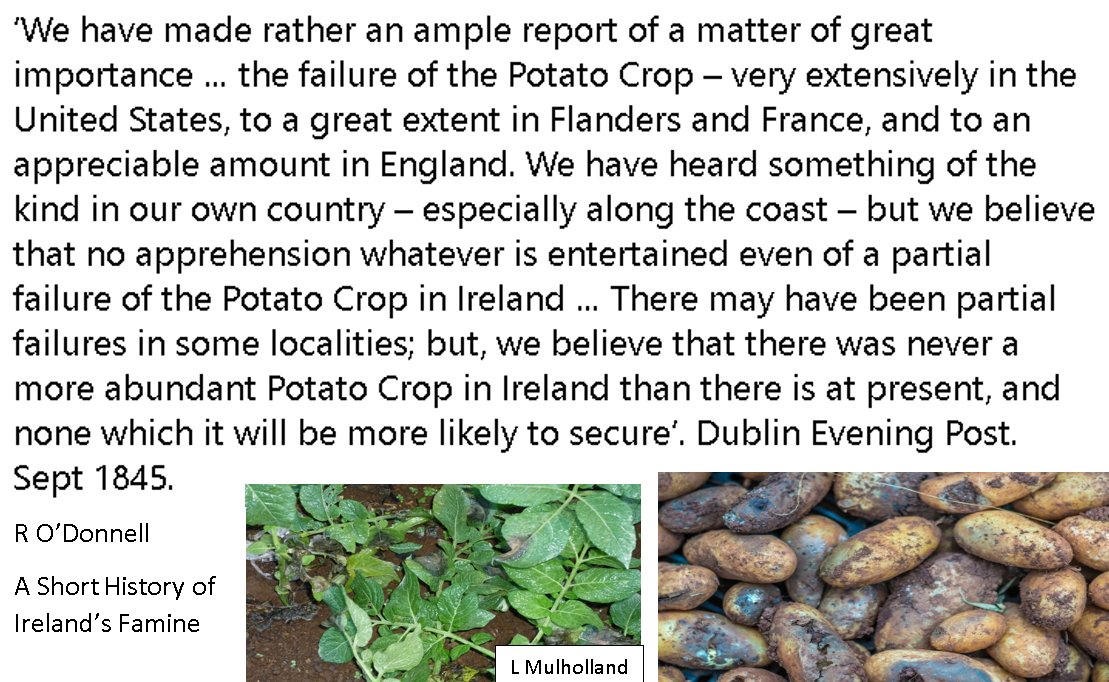Thread: The Great Famine/An Gorta Mór 1845-50
1-1.5 million died. 1-2 million emigrated. [estimates vary greatly, especially as whole families died so no one left to tell their story, & census figures underestimated as it was not compulsory to record births/deaths pre-1864] https://abs.twimg.com/emoji/v2/... draggable="false" alt="🥔" title="Kartoffel" aria-label="Emoji: Kartoffel">
https://abs.twimg.com/emoji/v2/... draggable="false" alt="🥔" title="Kartoffel" aria-label="Emoji: Kartoffel"> https://abs.twimg.com/emoji/v2/... draggable="false" alt="😢" title="Weinendes Gesicht" aria-label="Emoji: Weinendes Gesicht">
https://abs.twimg.com/emoji/v2/... draggable="false" alt="😢" title="Weinendes Gesicht" aria-label="Emoji: Weinendes Gesicht">
1-1.5 million died. 1-2 million emigrated. [estimates vary greatly, especially as whole families died so no one left to tell their story, & census figures underestimated as it was not compulsory to record births/deaths pre-1864]
Books on an Gorta Mór I& #39;m using:
 https://abs.twimg.com/emoji/v2/... draggable="false" alt="🥔" title="Kartoffel" aria-label="Emoji: Kartoffel"> Atlas of the Great Irish Famine (J Crowley, WJ Smyth, M Murphy)
https://abs.twimg.com/emoji/v2/... draggable="false" alt="🥔" title="Kartoffel" aria-label="Emoji: Kartoffel"> Atlas of the Great Irish Famine (J Crowley, WJ Smyth, M Murphy)
 https://abs.twimg.com/emoji/v2/... draggable="false" alt="🥔" title="Kartoffel" aria-label="Emoji: Kartoffel">The Great Irish Potato Famine (JS Donnelly Jr)
https://abs.twimg.com/emoji/v2/... draggable="false" alt="🥔" title="Kartoffel" aria-label="Emoji: Kartoffel">The Great Irish Potato Famine (JS Donnelly Jr)
 https://abs.twimg.com/emoji/v2/... draggable="false" alt="🥔" title="Kartoffel" aria-label="Emoji: Kartoffel">A Short History of Ireland& #39;s Famine (R O& #39;Donnell)
https://abs.twimg.com/emoji/v2/... draggable="false" alt="🥔" title="Kartoffel" aria-label="Emoji: Kartoffel">A Short History of Ireland& #39;s Famine (R O& #39;Donnell)
 https://abs.twimg.com/emoji/v2/... draggable="false" alt="🥔" title="Kartoffel" aria-label="Emoji: Kartoffel">Black Potatoes: The Story of the Great Irish Famine (S Ca Bartoletti).
https://abs.twimg.com/emoji/v2/... draggable="false" alt="🥔" title="Kartoffel" aria-label="Emoji: Kartoffel">Black Potatoes: The Story of the Great Irish Famine (S Ca Bartoletti).  https://abs.twimg.com/emoji/v2/... draggable="false" alt="😢" title="Weinendes Gesicht" aria-label="Emoji: Weinendes Gesicht">
https://abs.twimg.com/emoji/v2/... draggable="false" alt="😢" title="Weinendes Gesicht" aria-label="Emoji: Weinendes Gesicht">
"For much of her history, people in Ireland had plenty to eat", HistoryIreland. Ireland was a grower of barley in those days. Provided grain for cereals, breads & alcohol. However, the 12th C Norman invasion from Strongbow & Henry II of England meant overlords to provide for!
Under Oliver Cromwell (d 1658) & his forces, 10,000s of Irish were killed. He drove 100,000s more off their land in Ulster. They forcibly relocated to rocky, desolate areas in west Ireland; Connacht. Land here in west suitable only for the potato!  https://abs.twimg.com/emoji/v2/... draggable="false" alt="🥔" title="Kartoffel" aria-label="Emoji: Kartoffel">
https://abs.twimg.com/emoji/v2/... draggable="false" alt="🥔" title="Kartoffel" aria-label="Emoji: Kartoffel"> https://abs.twimg.com/emoji/v2/... draggable="false" alt="⚔️" title="Gekreuzte Schwerter" aria-label="Emoji: Gekreuzte Schwerter"> https://www.ighm.org/learn.html ">https://www.ighm.org/learn.htm...
https://abs.twimg.com/emoji/v2/... draggable="false" alt="⚔️" title="Gekreuzte Schwerter" aria-label="Emoji: Gekreuzte Schwerter"> https://www.ighm.org/learn.html ">https://www.ighm.org/learn.htm...
12 Aug 1652: ‘Act for the Settlement of Ireland’ allowed for transplantation to Clare or Connacht of Catholic Irish whose land was confiscated by Cromwell, to meet promises to adventurers & soldiers! Also known as the “To Hell or Connacht” Act! So potato essential as it grew! https://abs.twimg.com/emoji/v2/... draggable="false" alt="🥔" title="Kartoffel" aria-label="Emoji: Kartoffel">
https://abs.twimg.com/emoji/v2/... draggable="false" alt="🥔" title="Kartoffel" aria-label="Emoji: Kartoffel"> https://abs.twimg.com/emoji/v2/... draggable="false" alt="⚔️" title="Gekreuzte Schwerter" aria-label="Emoji: Gekreuzte Schwerter">
https://abs.twimg.com/emoji/v2/... draggable="false" alt="⚔️" title="Gekreuzte Schwerter" aria-label="Emoji: Gekreuzte Schwerter">
Eng parliamentarian Edmund Ludlow said of the Burren, Co Clare, Ireland in counter-guerilla operations there 1651–52; "It is a country where there is not enough water to drown a man, wood enough to hang one, nor earth enough to bury him." In part shows the distain for Irish RCs.
The potato was 1st domesticated in S Peru & Bolivia 7-10,000 years ago! Potato cultivars appear in a variety of colours, shapes, & sizes. Following millennia of selective breeding, there are now >1,000 different types of potatoes! Known in Ireland as spuds, praties or pruties! https://abs.twimg.com/emoji/v2/... draggable="false" alt="🥔" title="Kartoffel" aria-label="Emoji: Kartoffel">
https://abs.twimg.com/emoji/v2/... draggable="false" alt="🥔" title="Kartoffel" aria-label="Emoji: Kartoffel">
The potato was established in S Munster by late 1600s following Spanish conquest of Inca. Sir Walter Raleigh said to have planted 1st in Ireland near his home at Youghal, Co Cork c 1588! Spurned in some countries; came from under the ground so considered food for the lowly! https://abs.twimg.com/emoji/v2/... draggable="false" alt="🥔" title="Kartoffel" aria-label="Emoji: Kartoffel">
https://abs.twimg.com/emoji/v2/... draggable="false" alt="🥔" title="Kartoffel" aria-label="Emoji: Kartoffel">
Irish quickly won over by benefits of potatoes (saviour crop)!
 https://abs.twimg.com/emoji/v2/... draggable="false" alt="🥔" title="Kartoffel" aria-label="Emoji: Kartoffel"> slow to spoil
https://abs.twimg.com/emoji/v2/... draggable="false" alt="🥔" title="Kartoffel" aria-label="Emoji: Kartoffel"> slow to spoil
 https://abs.twimg.com/emoji/v2/... draggable="false" alt="🥔" title="Kartoffel" aria-label="Emoji: Kartoffel"> 3x caloric value grain
https://abs.twimg.com/emoji/v2/... draggable="false" alt="🥔" title="Kartoffel" aria-label="Emoji: Kartoffel"> 3x caloric value grain
 https://abs.twimg.com/emoji/v2/... draggable="false" alt="🥔" title="Kartoffel" aria-label="Emoji: Kartoffel"> cheap & easy to grow on large farms/small backyard lots
https://abs.twimg.com/emoji/v2/... draggable="false" alt="🥔" title="Kartoffel" aria-label="Emoji: Kartoffel"> cheap & easy to grow on large farms/small backyard lots
 https://abs.twimg.com/emoji/v2/... draggable="false" alt="🥔" title="Kartoffel" aria-label="Emoji: Kartoffel"> liked Ireland& #39;s climate
https://abs.twimg.com/emoji/v2/... draggable="false" alt="🥔" title="Kartoffel" aria-label="Emoji: Kartoffel"> liked Ireland& #39;s climate
 https://abs.twimg.com/emoji/v2/... draggable="false" alt="🥔" title="Kartoffel" aria-label="Emoji: Kartoffel"> insects uninterested
https://abs.twimg.com/emoji/v2/... draggable="false" alt="🥔" title="Kartoffel" aria-label="Emoji: Kartoffel"> insects uninterested
 https://abs.twimg.com/emoji/v2/... draggable="false" alt="🥔" title="Kartoffel" aria-label="Emoji: Kartoffel"> lots of different ways could be cooked!
https://abs.twimg.com/emoji/v2/... draggable="false" alt="🥔" title="Kartoffel" aria-label="Emoji: Kartoffel"> lots of different ways could be cooked!
 https://abs.twimg.com/emoji/v2/... draggable="false" alt="📷" title="Kamera" aria-label="Emoji: Kamera">lazy beds, Mayo.
https://abs.twimg.com/emoji/v2/... draggable="false" alt="📷" title="Kamera" aria-label="Emoji: Kamera">lazy beds, Mayo.
Famine background: “1801 Act of Union abolished the independent Irish Parliament & officially made Ireland part of the UK. As a result, all of Ireland was governed by the British parliament in London during the Great Hunger (1845–52)" Ireland& #39;s Great Hunger Museum, Hamden, CT, US
Ireland’s population mushroomed from c 4.75 million in 1791 census to 8.17 million in 1841 census (probably at least 8.5 million since inaccurate)! This was while 65,000/year after 1831 were leaving for N America! Highest population growth in W world!
>Underdevelopment in Ireland by London ensured the land couldn& #39;t absorb the human surplus of population growth.
>Guinness in Dublin & linen success in Antrim concealed this.
>Employment in Ireland’s manufacturing sector decreased by 15%, 1821-41!
Source: Ruan O& #39;Donnell. O& #39;Brien Press.
1740-41 Irish Famine, Bliain an Áir, the Year of Slaughter killed c 13%-20%! However this was a memory from a hundred yrs ago, & nothing could have stopped the rain & frost from destroying the grain & potatoes then. S, mid & W most affected; populated by poorest. Omen of future!
"Potatoes at morning
Potatoes at noon
And if I were to rise at midnight
Potatoes I& #39;d get."
19th C children& #39;s chant.
Especially since population density so high in uplands, people needed something to feed them! Potato saved them (not grains, or animals that went to landlord)!
Potatoes at noon
And if I were to rise at midnight
Potatoes I& #39;d get."
19th C children& #39;s chant.
Especially since population density so high in uplands, people needed something to feed them! Potato saved them (not grains, or animals that went to landlord)!
Strains potato grown ‘Black’, ‘Apple’ & ‘Cup’! ‘Lumper’ predominant by early 19th C, introduced by migrant workers returning from England c 1810. Waxy but better in other ways! Better yield especially in poor soil! Only East & Ulster didn’t grow it! c 1/3 population dependant! https://abs.twimg.com/emoji/v2/... draggable="false" alt="🥔" title="Kartoffel" aria-label="Emoji: Kartoffel">
https://abs.twimg.com/emoji/v2/... draggable="false" alt="🥔" title="Kartoffel" aria-label="Emoji: Kartoffel">
The generation confronted by the Great Famine 1845 was the 1st in which the potato was the staple diet of the rural poor. It has been estimated that country men of working age consumed as much as 14 pounds a day in 3 equal meals!  https://abs.twimg.com/emoji/v2/... draggable="false" alt="🎨" title="Farbpalette" aria-label="Emoji: Farbpalette">In loft over fire in this 1846 Co Kerry sketch.
https://abs.twimg.com/emoji/v2/... draggable="false" alt="🎨" title="Farbpalette" aria-label="Emoji: Farbpalette">In loft over fire in this 1846 Co Kerry sketch.
Lumper potato background:
 https://abs.twimg.com/emoji/v2/... draggable="false" alt="🥔" title="Kartoffel" aria-label="Emoji: Kartoffel">6 tonnes could be taken from 1 acre poor land!
https://abs.twimg.com/emoji/v2/... draggable="false" alt="🥔" title="Kartoffel" aria-label="Emoji: Kartoffel">6 tonnes could be taken from 1 acre poor land!
 https://abs.twimg.com/emoji/v2/... draggable="false" alt="🥔" title="Kartoffel" aria-label="Emoji: Kartoffel">thrived in acidic, sodden, low-grade soil (couldn& #39;t sustain cereals)!
https://abs.twimg.com/emoji/v2/... draggable="false" alt="🥔" title="Kartoffel" aria-label="Emoji: Kartoffel">thrived in acidic, sodden, low-grade soil (couldn& #39;t sustain cereals)!
 https://abs.twimg.com/emoji/v2/... draggable="false" alt="🥔" title="Kartoffel" aria-label="Emoji: Kartoffel">highly efficient reclaiming agent!
https://abs.twimg.com/emoji/v2/... draggable="false" alt="🥔" title="Kartoffel" aria-label="Emoji: Kartoffel">highly efficient reclaiming agent!
 https://abs.twimg.com/emoji/v2/... draggable="false" alt="🥔" title="Kartoffel" aria-label="Emoji: Kartoffel">those who didn& #39;t have money or didn& #39;t want to emigrate could remain on land!
https://abs.twimg.com/emoji/v2/... draggable="false" alt="🥔" title="Kartoffel" aria-label="Emoji: Kartoffel">those who didn& #39;t have money or didn& #39;t want to emigrate could remain on land!
©Ruan O& #39;Donnell
©Ruan O& #39;Donnell
"Lumper strain was so highly regarded that a critical error was made by failing to emulate the Andean practice of simultaneous planting a variety of species as a precaution against disease" R. O& #39;Donnell. But the Lumper was the only potato that could support a family on poor soil.
"This complacency [not using a variety of potato types] was partly owed to lack of agricultural education and the estrangement of the Imperial parliament from Irish administration. It was also a testament to the strong faith in the sturdy crop [the Lumper]." Ruan O& #39;Donnell  https://abs.twimg.com/emoji/v2/... draggable="false" alt="🥔" title="Kartoffel" aria-label="Emoji: Kartoffel">
https://abs.twimg.com/emoji/v2/... draggable="false" alt="🥔" title="Kartoffel" aria-label="Emoji: Kartoffel">
"By the mid-1800s approximately a third of the population depended on the potato for subsistence. Many more used the crop as an important part of their diet, as was the case in mid- and eastern Ulster and the towns." R O& #39;Donnell  https://abs.twimg.com/emoji/v2/... draggable="false" alt="📷" title="Kamera" aria-label="Emoji: Kamera">misnomered & #39;lazy beds& #39; in Cooley mts, Co Louth.
https://abs.twimg.com/emoji/v2/... draggable="false" alt="📷" title="Kamera" aria-label="Emoji: Kamera">misnomered & #39;lazy beds& #39; in Cooley mts, Co Louth. https://abs.twimg.com/emoji/v2/... draggable="false" alt="🥔" title="Kartoffel" aria-label="Emoji: Kartoffel">
https://abs.twimg.com/emoji/v2/... draggable="false" alt="🥔" title="Kartoffel" aria-label="Emoji: Kartoffel">
"The plant [potato] was essential to the survival of the semi-formal co-operatives or & #39;clachans& #39; which continued to proliferate on the coasts of the north-west, especially in western Ulster and Connacht." R O& #39;Donnnell.  https://abs.twimg.com/emoji/v2/... draggable="false" alt="📷" title="Kamera" aria-label="Emoji: Kamera">clachan/clochán at Glencolmcille Folk Village, Donegal
https://abs.twimg.com/emoji/v2/... draggable="false" alt="📷" title="Kamera" aria-label="Emoji: Kamera">clachan/clochán at Glencolmcille Folk Village, Donegal  https://abs.twimg.com/emoji/v2/... draggable="false" alt="🛖" title="Hut" aria-label="Emoji: Hut">
https://abs.twimg.com/emoji/v2/... draggable="false" alt="🛖" title="Hut" aria-label="Emoji: Hut"> https://abs.twimg.com/emoji/v2/... draggable="false" alt="🥔" title="Kartoffel" aria-label="Emoji: Kartoffel">
https://abs.twimg.com/emoji/v2/... draggable="false" alt="🥔" title="Kartoffel" aria-label="Emoji: Kartoffel">
A clachan/clochán may date to medieval times or earlier. It is a cluster of small single-storey cottages of farmers &/or fishermen, invariably found on poorer land. They virtually disappeared because of Famine.  https://abs.twimg.com/emoji/v2/... draggable="false" alt="📷" title="Kamera" aria-label="Emoji: Kamera">Clontuskert, Kellysgrove, Co Galway ©Clontuskert Photo Gallery
https://abs.twimg.com/emoji/v2/... draggable="false" alt="📷" title="Kamera" aria-label="Emoji: Kamera">Clontuskert, Kellysgrove, Co Galway ©Clontuskert Photo Gallery  https://abs.twimg.com/emoji/v2/... draggable="false" alt="👨🌾" title="Man farmer" aria-label="Emoji: Man farmer">
https://abs.twimg.com/emoji/v2/... draggable="false" alt="👨🌾" title="Man farmer" aria-label="Emoji: Man farmer"> https://abs.twimg.com/emoji/v2/... draggable="false" alt="🎣" title="Angelrute und Fisch" aria-label="Emoji: Angelrute und Fisch">
https://abs.twimg.com/emoji/v2/... draggable="false" alt="🎣" title="Angelrute und Fisch" aria-label="Emoji: Angelrute und Fisch">
"Communal farming facilitated & #39;rundale& #39; holdings where labourers divided a shared allotment into non-contiguous rectangular strips." R O& #39;Donnell. Common in Ireland, especially in western counties. Clachan was on the best land (infields). https://abs.twimg.com/emoji/v2/... draggable="false" alt="📷" title="Kamera" aria-label="Emoji: Kamera">Inver, Kilcommon, Erris, Co Mayo ©Comhar
https://abs.twimg.com/emoji/v2/... draggable="false" alt="📷" title="Kamera" aria-label="Emoji: Kamera">Inver, Kilcommon, Erris, Co Mayo ©Comhar
Potato background contd. https://abs.twimg.com/emoji/v2/... draggable="false" alt="🥔" title="Kartoffel" aria-label="Emoji: Kartoffel">Since Britain going through Industrial Revolution, it lacked agricultural primary production required to feed its newly relocated/rapidly expanding urban workforces. So Irish food sent to them. Irish had to exist on the potato! Summary of Ruan O& #39;Donnell.
https://abs.twimg.com/emoji/v2/... draggable="false" alt="🥔" title="Kartoffel" aria-label="Emoji: Kartoffel">Since Britain going through Industrial Revolution, it lacked agricultural primary production required to feed its newly relocated/rapidly expanding urban workforces. So Irish food sent to them. Irish had to exist on the potato! Summary of Ruan O& #39;Donnell.
Potato background contd.  https://abs.twimg.com/emoji/v2/... draggable="false" alt="🥔" title="Kartoffel" aria-label="Emoji: Kartoffel">
https://abs.twimg.com/emoji/v2/... draggable="false" alt="🥔" title="Kartoffel" aria-label="Emoji: Kartoffel">
-Act of Union; Westminster took Irish food & livestock as it saw fit.
-House of Commons historically disinterested in redressing economic imbalances in Ireland.
-Irish trade needed potato-dependent underclass of cheap labour.
Ruan O’Donnell summary.
-Act of Union; Westminster took Irish food & livestock as it saw fit.
-House of Commons historically disinterested in redressing economic imbalances in Ireland.
-Irish trade needed potato-dependent underclass of cheap labour.
Ruan O’Donnell summary.
Potato background contd.  https://abs.twimg.com/emoji/v2/... draggable="false" alt="🥔" title="Kartoffel" aria-label="Emoji: Kartoffel">
https://abs.twimg.com/emoji/v2/... draggable="false" alt="🥔" title="Kartoffel" aria-label="Emoji: Kartoffel">
-Oatmeal, increasingly required to fulfil rent rather than food.
-Cows/milk beyond reach of poor farmers.
-For poor (3 million?), >90% nutritional needs met by potato!
-1835 Poor Law Commissioners Report: 2.3 million living in dire poverty in Ireland.
-Oatmeal, increasingly required to fulfil rent rather than food.
-Cows/milk beyond reach of poor farmers.
-For poor (3 million?), >90% nutritional needs met by potato!
-1835 Poor Law Commissioners Report: 2.3 million living in dire poverty in Ireland.
31 July 1838: Irish Poor Law
-Leading Irish politicians in Westminster, including Daniel O& #39;Connell, resolutely opposed it!
-"the Irish version withheld a vital aspect of the English, the statutory right to relief for all destitute persons"! R O& #39;Donnell
-130 Union workhouses built
-Leading Irish politicians in Westminster, including Daniel O& #39;Connell, resolutely opposed it!
-"the Irish version withheld a vital aspect of the English, the statutory right to relief for all destitute persons"! R O& #39;Donnell
-130 Union workhouses built
The Coming of Blight:
-The cause of blight = a fungus, Phytophthora infestans
-In modern times attacked potato, tomatoes & pear melon
-Struck to its greatest extent in recorded history in 1840s Ireland!
-Different forms of spore transmission made it virtually impossible to detect
-The cause of blight = a fungus, Phytophthora infestans
-In modern times attacked potato, tomatoes & pear melon
-Struck to its greatest extent in recorded history in 1840s Ireland!
-Different forms of spore transmission made it virtually impossible to detect
The Coming of Blight:
-Thought by many that Phytophthora infestans, potato blight came from North America.
-From the US (1843) spread rapidly to NW Europe, June 1845.
-The suggested path of migration/diversification of P. infestans (lineage HERB-1) shown by red arrows on map.
-Thought by many that Phytophthora infestans, potato blight came from North America.
-From the US (1843) spread rapidly to NW Europe, June 1845.
-The suggested path of migration/diversification of P. infestans (lineage HERB-1) shown by red arrows on map.
The Coming of Blight:
-1843: The new disease, Phytophthora infestans, 1st noticed around New York/Philadelphia in the US.
-1844: It had spread to Montreal & Toronto.
-1845: Spread as far west as Chicago, & east to Maritime Provinces!
-1843: The new disease, Phytophthora infestans, 1st noticed around New York/Philadelphia in the US.
-1844: It had spread to Montreal & Toronto.
-1845: Spread as far west as Chicago, & east to Maritime Provinces!
The Coming of Blight:
-June 1845, 1st reported Belgium.
-Summer 1845 v wet! It thrived in damp, mild conditions!
-Ireland has abundant rainfall (Atlantic west winds) & mild temperatures (Gulf Stream) so was a perfect breeding ground!
-Aug 1845: Found in Botanic Gardens, Dublin!
-June 1845, 1st reported Belgium.
-Summer 1845 v wet! It thrived in damp, mild conditions!
-Ireland has abundant rainfall (Atlantic west winds) & mild temperatures (Gulf Stream) so was a perfect breeding ground!
-Aug 1845: Found in Botanic Gardens, Dublin!
I really recommend this fantastic & #39;EPIC The Irish Emigration Museum& #39; downloadable history pack on the Great Famine/Hunger, for children aged 8+! Has lots of facts adults might not know! Just send them your email!  https://abs.twimg.com/emoji/v2/... draggable="false" alt="🥔" title="Kartoffel" aria-label="Emoji: Kartoffel">
https://abs.twimg.com/emoji/v2/... draggable="false" alt="🥔" title="Kartoffel" aria-label="Emoji: Kartoffel">
https://dublin.epicchq.com/great-famine-history-at-home-pack?utm_campaign=History-at-Home%20Packs&utm_content=137598120&utm_medium=social&utm_source=twitter&hss_channel=tw-250084304">https://dublin.epicchq.com/great-fam...
https://dublin.epicchq.com/great-famine-history-at-home-pack?utm_campaign=History-at-Home%20Packs&utm_content=137598120&utm_medium=social&utm_source=twitter&hss_channel=tw-250084304">https://dublin.epicchq.com/great-fam...
6 Sept 1845: Blight publicly reported in pages of Dublin Evening Post. "At first it did not appear as if the scourge known to have caused severe problems in North America, the Continent & parts of England, would reach Ireland"! Ruan O& #39;Donnell. The Dublin report didn& #39;t believe it!
Sept 1845: Other European countries took measure to deal with blight:
-The Netherlands reduced food import taxes.
-Belgium intervened with comparative success.
-Several German states either totally embargoed or limited food exports.
Britain sent Irish food to eg Netherlands!
-The Netherlands reduced food import taxes.
-Belgium intervened with comparative success.
-Several German states either totally embargoed or limited food exports.
Britain sent Irish food to eg Netherlands!
Sept 1845: Thomas Campbell Foster started fact-finding tour of Ireland for Times of London
-Connacht& #39;s poor depicted as & #39;unenterprising & unenergetic& #39;!
-Generally castigated what he characterised as Ireland& #39;s tiresome dependency on Britain.
-"Supremacist language" (R O& #39;Donnell)
-Connacht& #39;s poor depicted as & #39;unenterprising & unenergetic& #39;!
-Generally castigated what he characterised as Ireland& #39;s tiresome dependency on Britain.
-"Supremacist language" (R O& #39;Donnell)

 Read on Twitter
Read on Twitter![Kartoffel Thread: The Great Famine/An Gorta Mór 1845-50 1-1.5 million died. 1-2 million emigrated. [estimates vary greatly, especially as whole families died so no one left to tell their story, & census figures underestimated as it was not compulsory to record births/deaths pre-1864]https://abs.twimg.com/emoji/v2/... draggable=](https://pbs.twimg.com/media/ETFc0ZJXgAEXpvm.jpg) https://abs.twimg.com/emoji/v2/... draggable="false" alt="😢" title="Weinendes Gesicht" aria-label="Emoji: Weinendes Gesicht">" title="Thread: The Great Famine/An Gorta Mór 1845-50 1-1.5 million died. 1-2 million emigrated. [estimates vary greatly, especially as whole families died so no one left to tell their story, & census figures underestimated as it was not compulsory to record births/deaths pre-1864]https://abs.twimg.com/emoji/v2/... draggable="false" alt="🥔" title="Kartoffel" aria-label="Emoji: Kartoffel">https://abs.twimg.com/emoji/v2/... draggable="false" alt="😢" title="Weinendes Gesicht" aria-label="Emoji: Weinendes Gesicht">" class="img-responsive" style="max-width:100%;"/>
https://abs.twimg.com/emoji/v2/... draggable="false" alt="😢" title="Weinendes Gesicht" aria-label="Emoji: Weinendes Gesicht">" title="Thread: The Great Famine/An Gorta Mór 1845-50 1-1.5 million died. 1-2 million emigrated. [estimates vary greatly, especially as whole families died so no one left to tell their story, & census figures underestimated as it was not compulsory to record births/deaths pre-1864]https://abs.twimg.com/emoji/v2/... draggable="false" alt="🥔" title="Kartoffel" aria-label="Emoji: Kartoffel">https://abs.twimg.com/emoji/v2/... draggable="false" alt="😢" title="Weinendes Gesicht" aria-label="Emoji: Weinendes Gesicht">" class="img-responsive" style="max-width:100%;"/>
 Atlas of the Great Irish Famine (J Crowley, WJ Smyth, M Murphy)https://abs.twimg.com/emoji/v2/... draggable="false" alt="🥔" title="Kartoffel" aria-label="Emoji: Kartoffel">The Great Irish Potato Famine (JS Donnelly Jr)https://abs.twimg.com/emoji/v2/... draggable="false" alt="🥔" title="Kartoffel" aria-label="Emoji: Kartoffel">A Short History of Ireland& #39;s Famine (R O& #39;Donnell)https://abs.twimg.com/emoji/v2/... draggable="false" alt="🥔" title="Kartoffel" aria-label="Emoji: Kartoffel">Black Potatoes: The Story of the Great Irish Famine (S Ca Bartoletti). https://abs.twimg.com/emoji/v2/... draggable="false" alt="😢" title="Weinendes Gesicht" aria-label="Emoji: Weinendes Gesicht">" title="Books on an Gorta Mór I& #39;m using:https://abs.twimg.com/emoji/v2/... draggable="false" alt="🥔" title="Kartoffel" aria-label="Emoji: Kartoffel"> Atlas of the Great Irish Famine (J Crowley, WJ Smyth, M Murphy)https://abs.twimg.com/emoji/v2/... draggable="false" alt="🥔" title="Kartoffel" aria-label="Emoji: Kartoffel">The Great Irish Potato Famine (JS Donnelly Jr)https://abs.twimg.com/emoji/v2/... draggable="false" alt="🥔" title="Kartoffel" aria-label="Emoji: Kartoffel">A Short History of Ireland& #39;s Famine (R O& #39;Donnell)https://abs.twimg.com/emoji/v2/... draggable="false" alt="🥔" title="Kartoffel" aria-label="Emoji: Kartoffel">Black Potatoes: The Story of the Great Irish Famine (S Ca Bartoletti). https://abs.twimg.com/emoji/v2/... draggable="false" alt="😢" title="Weinendes Gesicht" aria-label="Emoji: Weinendes Gesicht">" class="img-responsive" style="max-width:100%;"/>
Atlas of the Great Irish Famine (J Crowley, WJ Smyth, M Murphy)https://abs.twimg.com/emoji/v2/... draggable="false" alt="🥔" title="Kartoffel" aria-label="Emoji: Kartoffel">The Great Irish Potato Famine (JS Donnelly Jr)https://abs.twimg.com/emoji/v2/... draggable="false" alt="🥔" title="Kartoffel" aria-label="Emoji: Kartoffel">A Short History of Ireland& #39;s Famine (R O& #39;Donnell)https://abs.twimg.com/emoji/v2/... draggable="false" alt="🥔" title="Kartoffel" aria-label="Emoji: Kartoffel">Black Potatoes: The Story of the Great Irish Famine (S Ca Bartoletti). https://abs.twimg.com/emoji/v2/... draggable="false" alt="😢" title="Weinendes Gesicht" aria-label="Emoji: Weinendes Gesicht">" title="Books on an Gorta Mór I& #39;m using:https://abs.twimg.com/emoji/v2/... draggable="false" alt="🥔" title="Kartoffel" aria-label="Emoji: Kartoffel"> Atlas of the Great Irish Famine (J Crowley, WJ Smyth, M Murphy)https://abs.twimg.com/emoji/v2/... draggable="false" alt="🥔" title="Kartoffel" aria-label="Emoji: Kartoffel">The Great Irish Potato Famine (JS Donnelly Jr)https://abs.twimg.com/emoji/v2/... draggable="false" alt="🥔" title="Kartoffel" aria-label="Emoji: Kartoffel">A Short History of Ireland& #39;s Famine (R O& #39;Donnell)https://abs.twimg.com/emoji/v2/... draggable="false" alt="🥔" title="Kartoffel" aria-label="Emoji: Kartoffel">Black Potatoes: The Story of the Great Irish Famine (S Ca Bartoletti). https://abs.twimg.com/emoji/v2/... draggable="false" alt="😢" title="Weinendes Gesicht" aria-label="Emoji: Weinendes Gesicht">" class="img-responsive" style="max-width:100%;"/>
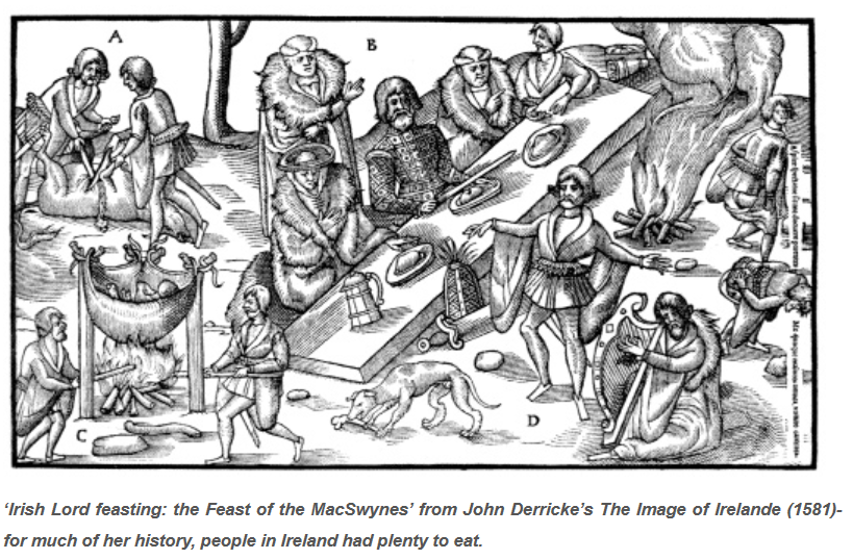
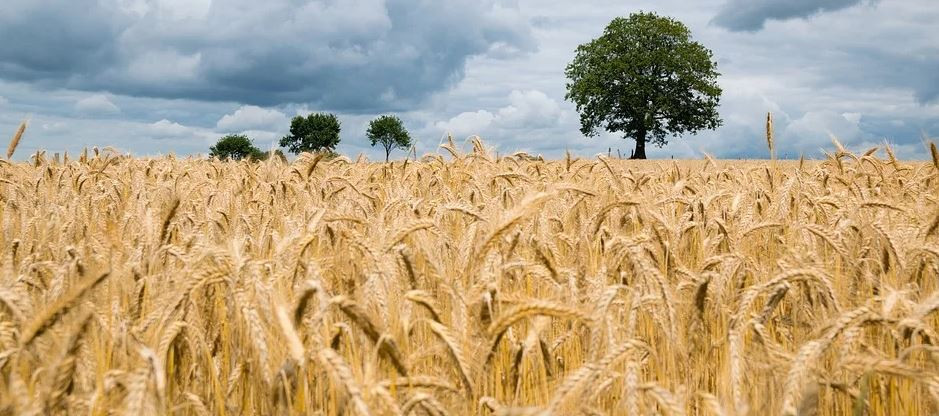
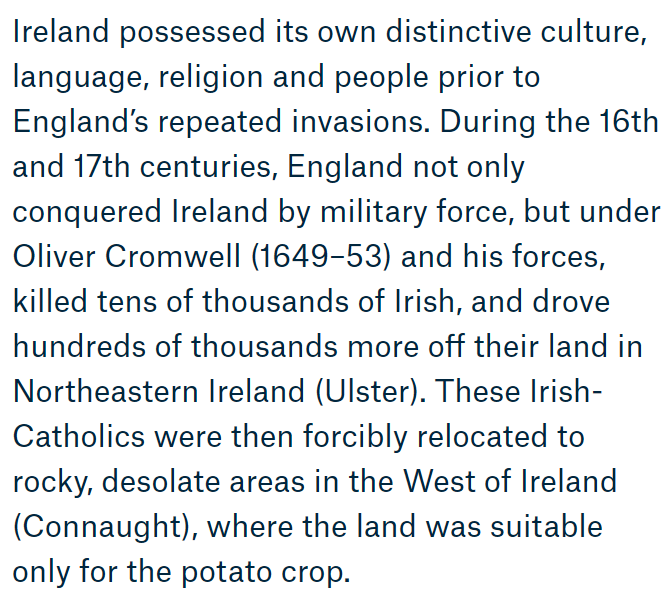 https://abs.twimg.com/emoji/v2/... draggable="false" alt="⚔️" title="Gekreuzte Schwerter" aria-label="Emoji: Gekreuzte Schwerter"> https://www.ighm.org/learn.htm..." title="Under Oliver Cromwell (d 1658) & his forces, 10,000s of Irish were killed. He drove 100,000s more off their land in Ulster. They forcibly relocated to rocky, desolate areas in west Ireland; Connacht. Land here in west suitable only for the potato! https://abs.twimg.com/emoji/v2/... draggable="false" alt="🥔" title="Kartoffel" aria-label="Emoji: Kartoffel">https://abs.twimg.com/emoji/v2/... draggable="false" alt="⚔️" title="Gekreuzte Schwerter" aria-label="Emoji: Gekreuzte Schwerter"> https://www.ighm.org/learn.htm...">
https://abs.twimg.com/emoji/v2/... draggable="false" alt="⚔️" title="Gekreuzte Schwerter" aria-label="Emoji: Gekreuzte Schwerter"> https://www.ighm.org/learn.htm..." title="Under Oliver Cromwell (d 1658) & his forces, 10,000s of Irish were killed. He drove 100,000s more off their land in Ulster. They forcibly relocated to rocky, desolate areas in west Ireland; Connacht. Land here in west suitable only for the potato! https://abs.twimg.com/emoji/v2/... draggable="false" alt="🥔" title="Kartoffel" aria-label="Emoji: Kartoffel">https://abs.twimg.com/emoji/v2/... draggable="false" alt="⚔️" title="Gekreuzte Schwerter" aria-label="Emoji: Gekreuzte Schwerter"> https://www.ighm.org/learn.htm...">
 https://abs.twimg.com/emoji/v2/... draggable="false" alt="⚔️" title="Gekreuzte Schwerter" aria-label="Emoji: Gekreuzte Schwerter"> https://www.ighm.org/learn.htm..." title="Under Oliver Cromwell (d 1658) & his forces, 10,000s of Irish were killed. He drove 100,000s more off their land in Ulster. They forcibly relocated to rocky, desolate areas in west Ireland; Connacht. Land here in west suitable only for the potato! https://abs.twimg.com/emoji/v2/... draggable="false" alt="🥔" title="Kartoffel" aria-label="Emoji: Kartoffel">https://abs.twimg.com/emoji/v2/... draggable="false" alt="⚔️" title="Gekreuzte Schwerter" aria-label="Emoji: Gekreuzte Schwerter"> https://www.ighm.org/learn.htm...">
https://abs.twimg.com/emoji/v2/... draggable="false" alt="⚔️" title="Gekreuzte Schwerter" aria-label="Emoji: Gekreuzte Schwerter"> https://www.ighm.org/learn.htm..." title="Under Oliver Cromwell (d 1658) & his forces, 10,000s of Irish were killed. He drove 100,000s more off their land in Ulster. They forcibly relocated to rocky, desolate areas in west Ireland; Connacht. Land here in west suitable only for the potato! https://abs.twimg.com/emoji/v2/... draggable="false" alt="🥔" title="Kartoffel" aria-label="Emoji: Kartoffel">https://abs.twimg.com/emoji/v2/... draggable="false" alt="⚔️" title="Gekreuzte Schwerter" aria-label="Emoji: Gekreuzte Schwerter"> https://www.ighm.org/learn.htm...">
 https://abs.twimg.com/emoji/v2/... draggable="false" alt="⚔️" title="Gekreuzte Schwerter" aria-label="Emoji: Gekreuzte Schwerter">" title="12 Aug 1652: ‘Act for the Settlement of Ireland’ allowed for transplantation to Clare or Connacht of Catholic Irish whose land was confiscated by Cromwell, to meet promises to adventurers & soldiers! Also known as the “To Hell or Connacht” Act! So potato essential as it grew!https://abs.twimg.com/emoji/v2/... draggable="false" alt="🥔" title="Kartoffel" aria-label="Emoji: Kartoffel">https://abs.twimg.com/emoji/v2/... draggable="false" alt="⚔️" title="Gekreuzte Schwerter" aria-label="Emoji: Gekreuzte Schwerter">" class="img-responsive" style="max-width:100%;"/>
https://abs.twimg.com/emoji/v2/... draggable="false" alt="⚔️" title="Gekreuzte Schwerter" aria-label="Emoji: Gekreuzte Schwerter">" title="12 Aug 1652: ‘Act for the Settlement of Ireland’ allowed for transplantation to Clare or Connacht of Catholic Irish whose land was confiscated by Cromwell, to meet promises to adventurers & soldiers! Also known as the “To Hell or Connacht” Act! So potato essential as it grew!https://abs.twimg.com/emoji/v2/... draggable="false" alt="🥔" title="Kartoffel" aria-label="Emoji: Kartoffel">https://abs.twimg.com/emoji/v2/... draggable="false" alt="⚔️" title="Gekreuzte Schwerter" aria-label="Emoji: Gekreuzte Schwerter">" class="img-responsive" style="max-width:100%;"/>

 " title="The potato was 1st domesticated in S Peru & Bolivia 7-10,000 years ago! Potato cultivars appear in a variety of colours, shapes, & sizes. Following millennia of selective breeding, there are now >1,000 different types of potatoes! Known in Ireland as spuds, praties or pruties!https://abs.twimg.com/emoji/v2/... draggable="false" alt="🥔" title="Kartoffel" aria-label="Emoji: Kartoffel">">
" title="The potato was 1st domesticated in S Peru & Bolivia 7-10,000 years ago! Potato cultivars appear in a variety of colours, shapes, & sizes. Following millennia of selective breeding, there are now >1,000 different types of potatoes! Known in Ireland as spuds, praties or pruties!https://abs.twimg.com/emoji/v2/... draggable="false" alt="🥔" title="Kartoffel" aria-label="Emoji: Kartoffel">">
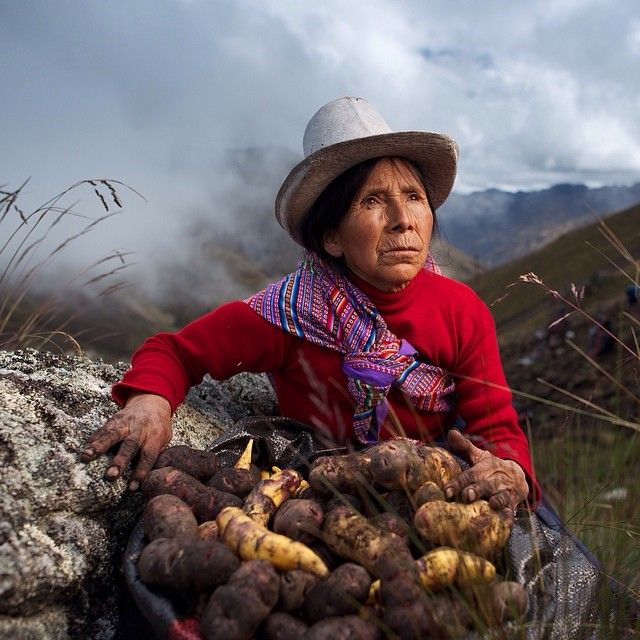 " title="The potato was 1st domesticated in S Peru & Bolivia 7-10,000 years ago! Potato cultivars appear in a variety of colours, shapes, & sizes. Following millennia of selective breeding, there are now >1,000 different types of potatoes! Known in Ireland as spuds, praties or pruties!https://abs.twimg.com/emoji/v2/... draggable="false" alt="🥔" title="Kartoffel" aria-label="Emoji: Kartoffel">">
" title="The potato was 1st domesticated in S Peru & Bolivia 7-10,000 years ago! Potato cultivars appear in a variety of colours, shapes, & sizes. Following millennia of selective breeding, there are now >1,000 different types of potatoes! Known in Ireland as spuds, praties or pruties!https://abs.twimg.com/emoji/v2/... draggable="false" alt="🥔" title="Kartoffel" aria-label="Emoji: Kartoffel">">
 background: Mainly 1695+ England enacted Penal Laws. Denied civil/human rights to RCs, & basically outlawed the Catholic religion in Ireland (>90% population)! Gaelic language banned. eg 1704: no RC could buy land, leases limited to 31 yrs, Protestant heirs received everything!" title="https://abs.twimg.com/emoji/v2/... draggable="false" alt="🥔" title="Kartoffel" aria-label="Emoji: Kartoffel">background: Mainly 1695+ England enacted Penal Laws. Denied civil/human rights to RCs, & basically outlawed the Catholic religion in Ireland (>90% population)! Gaelic language banned. eg 1704: no RC could buy land, leases limited to 31 yrs, Protestant heirs received everything!" class="img-responsive" style="max-width:100%;"/>
background: Mainly 1695+ England enacted Penal Laws. Denied civil/human rights to RCs, & basically outlawed the Catholic religion in Ireland (>90% population)! Gaelic language banned. eg 1704: no RC could buy land, leases limited to 31 yrs, Protestant heirs received everything!" title="https://abs.twimg.com/emoji/v2/... draggable="false" alt="🥔" title="Kartoffel" aria-label="Emoji: Kartoffel">background: Mainly 1695+ England enacted Penal Laws. Denied civil/human rights to RCs, & basically outlawed the Catholic religion in Ireland (>90% population)! Gaelic language banned. eg 1704: no RC could buy land, leases limited to 31 yrs, Protestant heirs received everything!" class="img-responsive" style="max-width:100%;"/>
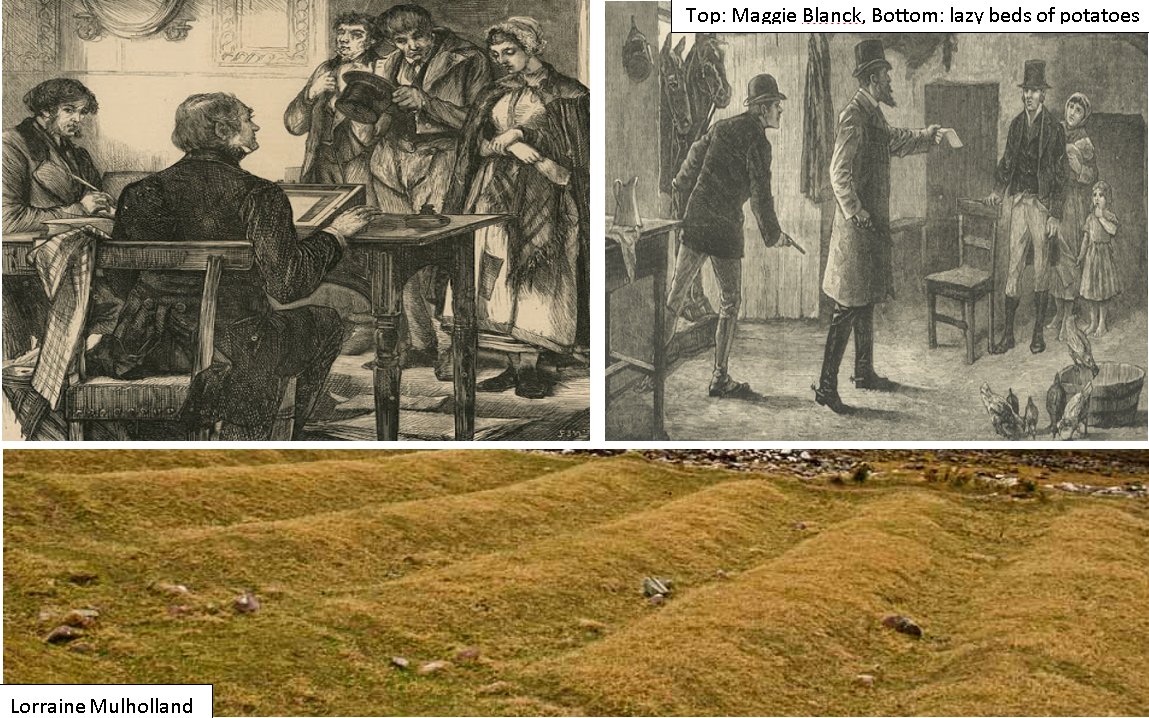 background: 1600, Protestants owned 10% of Ireland! By 1778 owned 95% because of Penal Laws! Majority Penal Laws removed 1778–1793 but effects lasted! eg 1840+, tithes no longer payable by tenants but by landlords (but they were allowed to increase rents to make up difference)!" title="https://abs.twimg.com/emoji/v2/... draggable="false" alt="🥔" title="Kartoffel" aria-label="Emoji: Kartoffel">background: 1600, Protestants owned 10% of Ireland! By 1778 owned 95% because of Penal Laws! Majority Penal Laws removed 1778–1793 but effects lasted! eg 1840+, tithes no longer payable by tenants but by landlords (but they were allowed to increase rents to make up difference)!" class="img-responsive" style="max-width:100%;"/>
background: 1600, Protestants owned 10% of Ireland! By 1778 owned 95% because of Penal Laws! Majority Penal Laws removed 1778–1793 but effects lasted! eg 1840+, tithes no longer payable by tenants but by landlords (but they were allowed to increase rents to make up difference)!" title="https://abs.twimg.com/emoji/v2/... draggable="false" alt="🥔" title="Kartoffel" aria-label="Emoji: Kartoffel">background: 1600, Protestants owned 10% of Ireland! By 1778 owned 95% because of Penal Laws! Majority Penal Laws removed 1778–1793 but effects lasted! eg 1840+, tithes no longer payable by tenants but by landlords (but they were allowed to increase rents to make up difference)!" class="img-responsive" style="max-width:100%;"/>
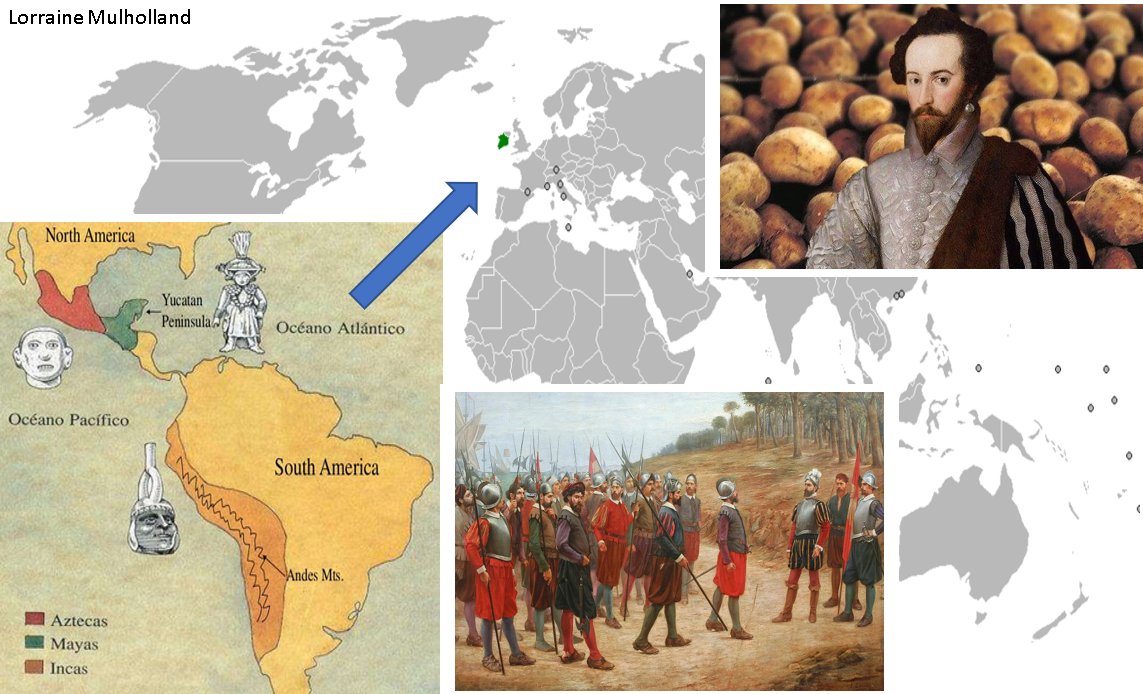 " title="The potato was established in S Munster by late 1600s following Spanish conquest of Inca. Sir Walter Raleigh said to have planted 1st in Ireland near his home at Youghal, Co Cork c 1588! Spurned in some countries; came from under the ground so considered food for the lowly!https://abs.twimg.com/emoji/v2/... draggable="false" alt="🥔" title="Kartoffel" aria-label="Emoji: Kartoffel">" class="img-responsive" style="max-width:100%;"/>
" title="The potato was established in S Munster by late 1600s following Spanish conquest of Inca. Sir Walter Raleigh said to have planted 1st in Ireland near his home at Youghal, Co Cork c 1588! Spurned in some countries; came from under the ground so considered food for the lowly!https://abs.twimg.com/emoji/v2/... draggable="false" alt="🥔" title="Kartoffel" aria-label="Emoji: Kartoffel">" class="img-responsive" style="max-width:100%;"/>
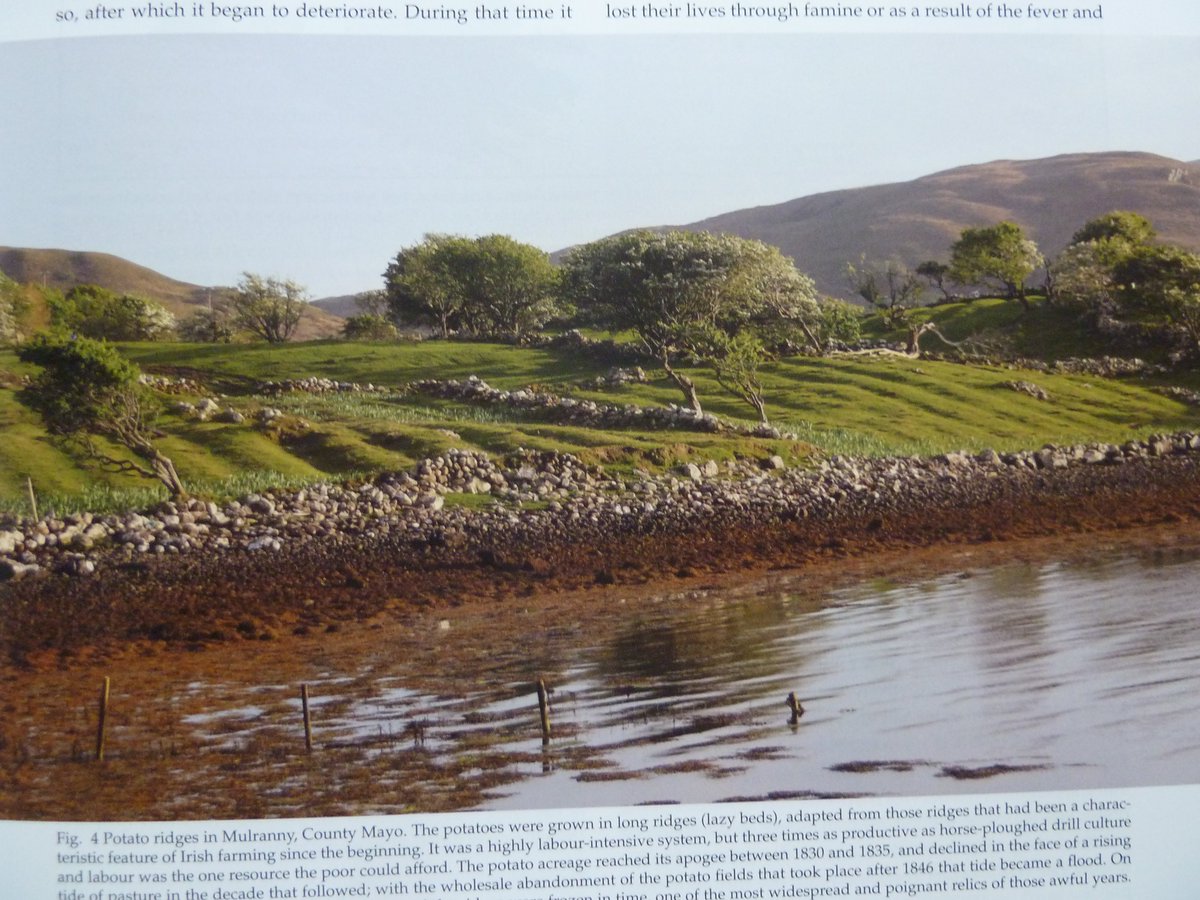 slow to spoilhttps://abs.twimg.com/emoji/v2/... draggable="false" alt="🥔" title="Kartoffel" aria-label="Emoji: Kartoffel"> 3x caloric value grainhttps://abs.twimg.com/emoji/v2/... draggable="false" alt="🥔" title="Kartoffel" aria-label="Emoji: Kartoffel"> cheap & easy to grow on large farms/small backyard lotshttps://abs.twimg.com/emoji/v2/... draggable="false" alt="🥔" title="Kartoffel" aria-label="Emoji: Kartoffel"> liked Ireland& #39;s climate https://abs.twimg.com/emoji/v2/... draggable="false" alt="🥔" title="Kartoffel" aria-label="Emoji: Kartoffel"> insects uninterested https://abs.twimg.com/emoji/v2/... draggable="false" alt="🥔" title="Kartoffel" aria-label="Emoji: Kartoffel"> lots of different ways could be cooked!https://abs.twimg.com/emoji/v2/... draggable="false" alt="📷" title="Kamera" aria-label="Emoji: Kamera">lazy beds, Mayo." title="Irish quickly won over by benefits of potatoes (saviour crop)! https://abs.twimg.com/emoji/v2/... draggable="false" alt="🥔" title="Kartoffel" aria-label="Emoji: Kartoffel"> slow to spoilhttps://abs.twimg.com/emoji/v2/... draggable="false" alt="🥔" title="Kartoffel" aria-label="Emoji: Kartoffel"> 3x caloric value grainhttps://abs.twimg.com/emoji/v2/... draggable="false" alt="🥔" title="Kartoffel" aria-label="Emoji: Kartoffel"> cheap & easy to grow on large farms/small backyard lotshttps://abs.twimg.com/emoji/v2/... draggable="false" alt="🥔" title="Kartoffel" aria-label="Emoji: Kartoffel"> liked Ireland& #39;s climate https://abs.twimg.com/emoji/v2/... draggable="false" alt="🥔" title="Kartoffel" aria-label="Emoji: Kartoffel"> insects uninterested https://abs.twimg.com/emoji/v2/... draggable="false" alt="🥔" title="Kartoffel" aria-label="Emoji: Kartoffel"> lots of different ways could be cooked!https://abs.twimg.com/emoji/v2/... draggable="false" alt="📷" title="Kamera" aria-label="Emoji: Kamera">lazy beds, Mayo." class="img-responsive" style="max-width:100%;"/>
slow to spoilhttps://abs.twimg.com/emoji/v2/... draggable="false" alt="🥔" title="Kartoffel" aria-label="Emoji: Kartoffel"> 3x caloric value grainhttps://abs.twimg.com/emoji/v2/... draggable="false" alt="🥔" title="Kartoffel" aria-label="Emoji: Kartoffel"> cheap & easy to grow on large farms/small backyard lotshttps://abs.twimg.com/emoji/v2/... draggable="false" alt="🥔" title="Kartoffel" aria-label="Emoji: Kartoffel"> liked Ireland& #39;s climate https://abs.twimg.com/emoji/v2/... draggable="false" alt="🥔" title="Kartoffel" aria-label="Emoji: Kartoffel"> insects uninterested https://abs.twimg.com/emoji/v2/... draggable="false" alt="🥔" title="Kartoffel" aria-label="Emoji: Kartoffel"> lots of different ways could be cooked!https://abs.twimg.com/emoji/v2/... draggable="false" alt="📷" title="Kamera" aria-label="Emoji: Kamera">lazy beds, Mayo." title="Irish quickly won over by benefits of potatoes (saviour crop)! https://abs.twimg.com/emoji/v2/... draggable="false" alt="🥔" title="Kartoffel" aria-label="Emoji: Kartoffel"> slow to spoilhttps://abs.twimg.com/emoji/v2/... draggable="false" alt="🥔" title="Kartoffel" aria-label="Emoji: Kartoffel"> 3x caloric value grainhttps://abs.twimg.com/emoji/v2/... draggable="false" alt="🥔" title="Kartoffel" aria-label="Emoji: Kartoffel"> cheap & easy to grow on large farms/small backyard lotshttps://abs.twimg.com/emoji/v2/... draggable="false" alt="🥔" title="Kartoffel" aria-label="Emoji: Kartoffel"> liked Ireland& #39;s climate https://abs.twimg.com/emoji/v2/... draggable="false" alt="🥔" title="Kartoffel" aria-label="Emoji: Kartoffel"> insects uninterested https://abs.twimg.com/emoji/v2/... draggable="false" alt="🥔" title="Kartoffel" aria-label="Emoji: Kartoffel"> lots of different ways could be cooked!https://abs.twimg.com/emoji/v2/... draggable="false" alt="📷" title="Kamera" aria-label="Emoji: Kamera">lazy beds, Mayo." class="img-responsive" style="max-width:100%;"/>
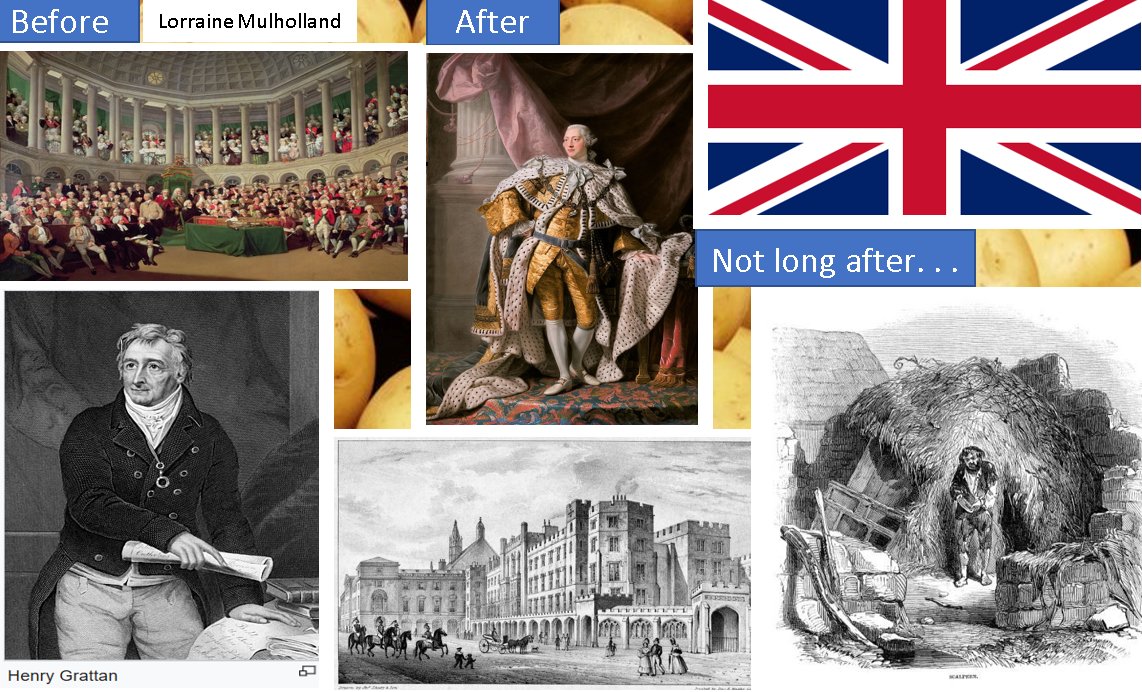
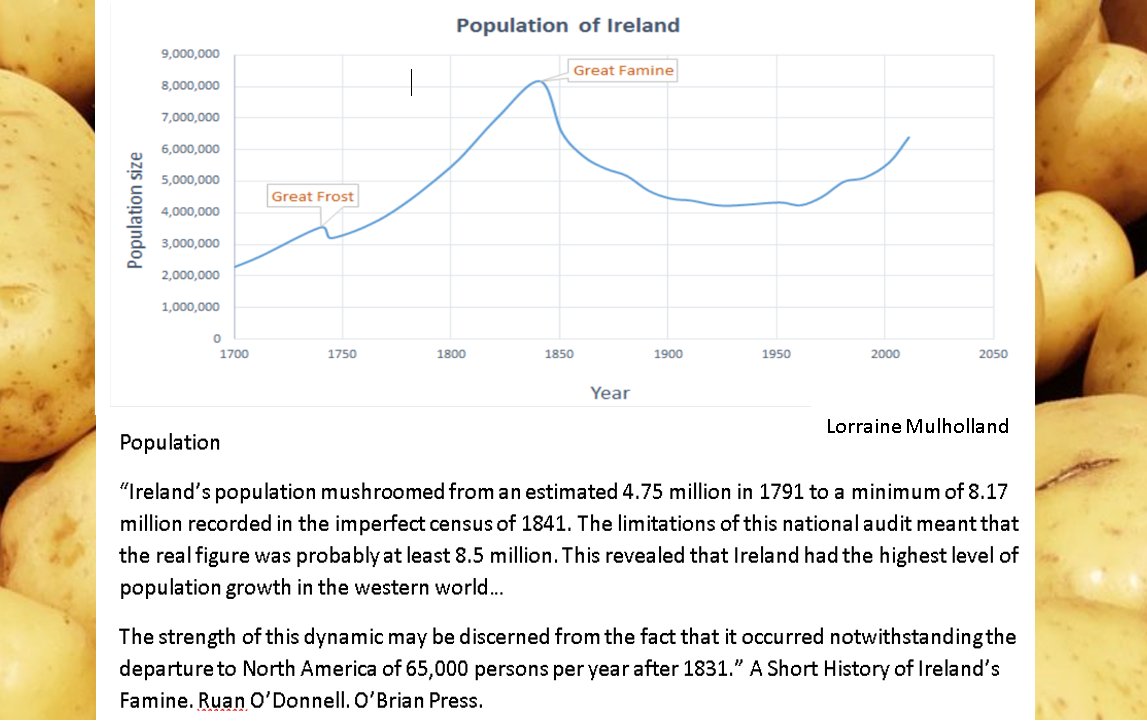 background: Population.Ireland’s population mushroomed from c 4.75 million in 1791 census to 8.17 million in 1841 census (probably at least 8.5 million since inaccurate)! This was while 65,000/year after 1831 were leaving for N America! Highest population growth in W world!" title="https://abs.twimg.com/emoji/v2/... draggable="false" alt="🥔" title="Kartoffel" aria-label="Emoji: Kartoffel">background: Population.Ireland’s population mushroomed from c 4.75 million in 1791 census to 8.17 million in 1841 census (probably at least 8.5 million since inaccurate)! This was while 65,000/year after 1831 were leaving for N America! Highest population growth in W world!" class="img-responsive" style="max-width:100%;"/>
background: Population.Ireland’s population mushroomed from c 4.75 million in 1791 census to 8.17 million in 1841 census (probably at least 8.5 million since inaccurate)! This was while 65,000/year after 1831 were leaving for N America! Highest population growth in W world!" title="https://abs.twimg.com/emoji/v2/... draggable="false" alt="🥔" title="Kartoffel" aria-label="Emoji: Kartoffel">background: Population.Ireland’s population mushroomed from c 4.75 million in 1791 census to 8.17 million in 1841 census (probably at least 8.5 million since inaccurate)! This was while 65,000/year after 1831 were leaving for N America! Highest population growth in W world!" class="img-responsive" style="max-width:100%;"/>
 background: Population contd.>Underdevelopment in Ireland by London ensured the land couldn& #39;t absorb the human surplus of population growth.>Guinness in Dublin & linen success in Antrim concealed this.>Employment in Ireland’s manufacturing sector decreased by 15%, 1821-41!" title="https://abs.twimg.com/emoji/v2/... draggable="false" alt="🥔" title="Kartoffel" aria-label="Emoji: Kartoffel">background: Population contd.>Underdevelopment in Ireland by London ensured the land couldn& #39;t absorb the human surplus of population growth.>Guinness in Dublin & linen success in Antrim concealed this.>Employment in Ireland’s manufacturing sector decreased by 15%, 1821-41!" class="img-responsive" style="max-width:100%;"/>
background: Population contd.>Underdevelopment in Ireland by London ensured the land couldn& #39;t absorb the human surplus of population growth.>Guinness in Dublin & linen success in Antrim concealed this.>Employment in Ireland’s manufacturing sector decreased by 15%, 1821-41!" title="https://abs.twimg.com/emoji/v2/... draggable="false" alt="🥔" title="Kartoffel" aria-label="Emoji: Kartoffel">background: Population contd.>Underdevelopment in Ireland by London ensured the land couldn& #39;t absorb the human surplus of population growth.>Guinness in Dublin & linen success in Antrim concealed this.>Employment in Ireland’s manufacturing sector decreased by 15%, 1821-41!" class="img-responsive" style="max-width:100%;"/>
 background: Population contd.https://abs.twimg.com/emoji/v2/... draggable="false" alt="🥔" title="Kartoffel" aria-label="Emoji: Kartoffel">More than 5x more dwellings built on formerly disfavoured uplands than on more fertile, accessible & familiar lowlands! https://abs.twimg.com/emoji/v2/... draggable="false" alt="🥔" title="Kartoffel" aria-label="Emoji: Kartoffel">By 1841 habitation density on hilltops double that of traditional low-lying farms!Source: Ruan O& #39;Donnell. O& #39;Brien Press." title="https://abs.twimg.com/emoji/v2/... draggable="false" alt="🥔" title="Kartoffel" aria-label="Emoji: Kartoffel">background: Population contd.https://abs.twimg.com/emoji/v2/... draggable="false" alt="🥔" title="Kartoffel" aria-label="Emoji: Kartoffel">More than 5x more dwellings built on formerly disfavoured uplands than on more fertile, accessible & familiar lowlands! https://abs.twimg.com/emoji/v2/... draggable="false" alt="🥔" title="Kartoffel" aria-label="Emoji: Kartoffel">By 1841 habitation density on hilltops double that of traditional low-lying farms!Source: Ruan O& #39;Donnell. O& #39;Brien Press." class="img-responsive" style="max-width:100%;"/>
background: Population contd.https://abs.twimg.com/emoji/v2/... draggable="false" alt="🥔" title="Kartoffel" aria-label="Emoji: Kartoffel">More than 5x more dwellings built on formerly disfavoured uplands than on more fertile, accessible & familiar lowlands! https://abs.twimg.com/emoji/v2/... draggable="false" alt="🥔" title="Kartoffel" aria-label="Emoji: Kartoffel">By 1841 habitation density on hilltops double that of traditional low-lying farms!Source: Ruan O& #39;Donnell. O& #39;Brien Press." title="https://abs.twimg.com/emoji/v2/... draggable="false" alt="🥔" title="Kartoffel" aria-label="Emoji: Kartoffel">background: Population contd.https://abs.twimg.com/emoji/v2/... draggable="false" alt="🥔" title="Kartoffel" aria-label="Emoji: Kartoffel">More than 5x more dwellings built on formerly disfavoured uplands than on more fertile, accessible & familiar lowlands! https://abs.twimg.com/emoji/v2/... draggable="false" alt="🥔" title="Kartoffel" aria-label="Emoji: Kartoffel">By 1841 habitation density on hilltops double that of traditional low-lying farms!Source: Ruan O& #39;Donnell. O& #39;Brien Press." class="img-responsive" style="max-width:100%;"/>
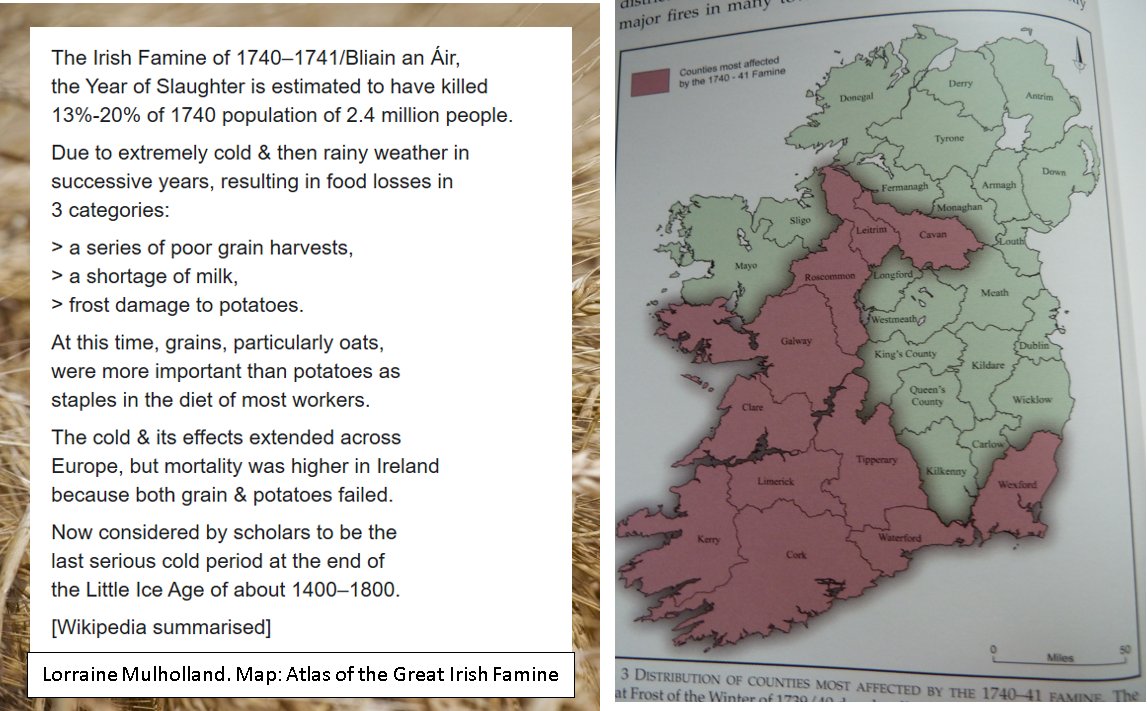
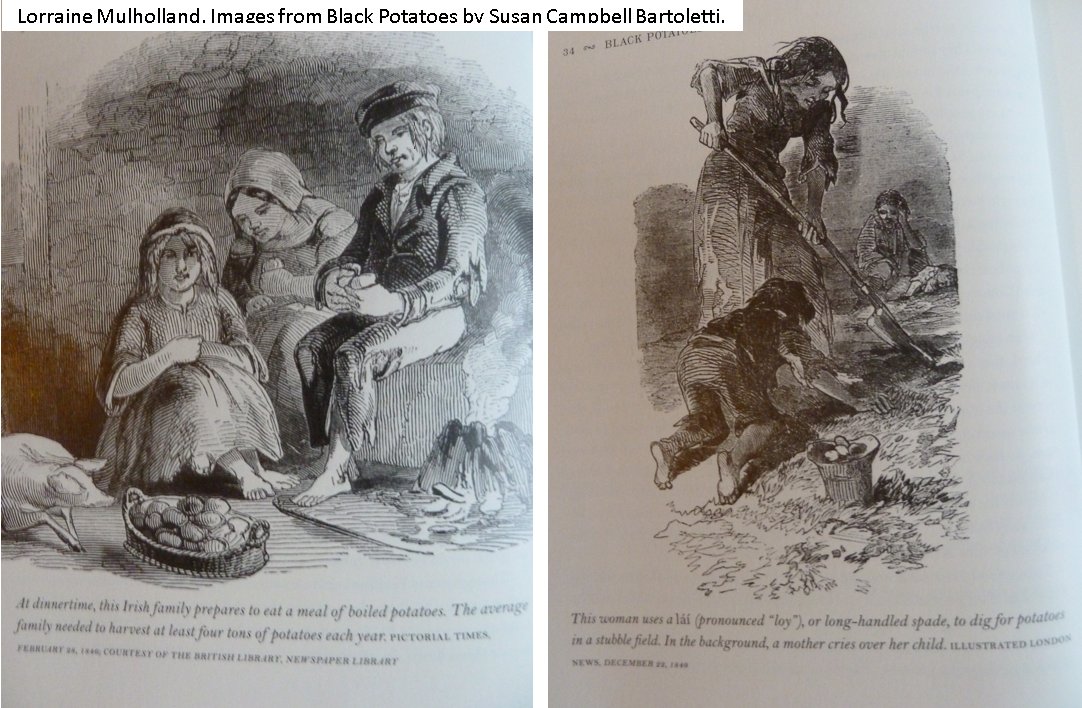
 " title="Strains potato grown ‘Black’, ‘Apple’ & ‘Cup’! ‘Lumper’ predominant by early 19th C, introduced by migrant workers returning from England c 1810. Waxy but better in other ways! Better yield especially in poor soil! Only East & Ulster didn’t grow it! c 1/3 population dependant!https://abs.twimg.com/emoji/v2/... draggable="false" alt="🥔" title="Kartoffel" aria-label="Emoji: Kartoffel">" class="img-responsive" style="max-width:100%;"/>
" title="Strains potato grown ‘Black’, ‘Apple’ & ‘Cup’! ‘Lumper’ predominant by early 19th C, introduced by migrant workers returning from England c 1810. Waxy but better in other ways! Better yield especially in poor soil! Only East & Ulster didn’t grow it! c 1/3 population dependant!https://abs.twimg.com/emoji/v2/... draggable="false" alt="🥔" title="Kartoffel" aria-label="Emoji: Kartoffel">" class="img-responsive" style="max-width:100%;"/>
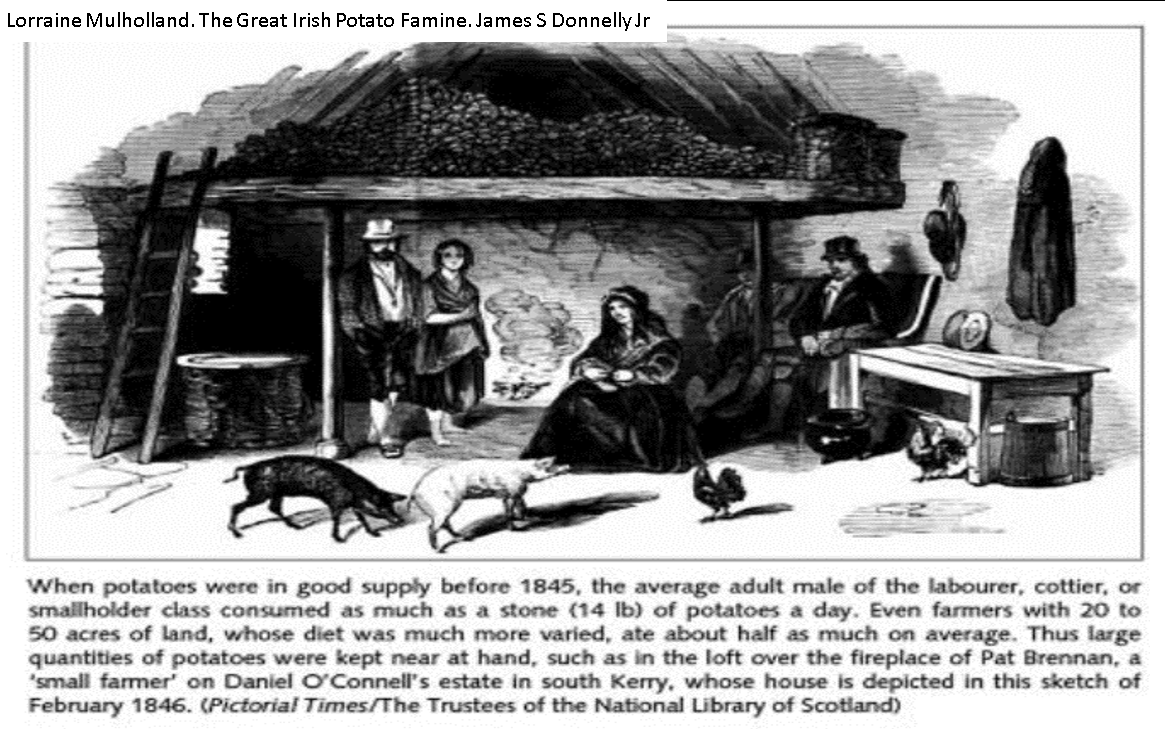 In loft over fire in this 1846 Co Kerry sketch." title="The generation confronted by the Great Famine 1845 was the 1st in which the potato was the staple diet of the rural poor. It has been estimated that country men of working age consumed as much as 14 pounds a day in 3 equal meals! https://abs.twimg.com/emoji/v2/... draggable="false" alt="🎨" title="Farbpalette" aria-label="Emoji: Farbpalette">In loft over fire in this 1846 Co Kerry sketch." class="img-responsive" style="max-width:100%;"/>
In loft over fire in this 1846 Co Kerry sketch." title="The generation confronted by the Great Famine 1845 was the 1st in which the potato was the staple diet of the rural poor. It has been estimated that country men of working age consumed as much as 14 pounds a day in 3 equal meals! https://abs.twimg.com/emoji/v2/... draggable="false" alt="🎨" title="Farbpalette" aria-label="Emoji: Farbpalette">In loft over fire in this 1846 Co Kerry sketch." class="img-responsive" style="max-width:100%;"/>
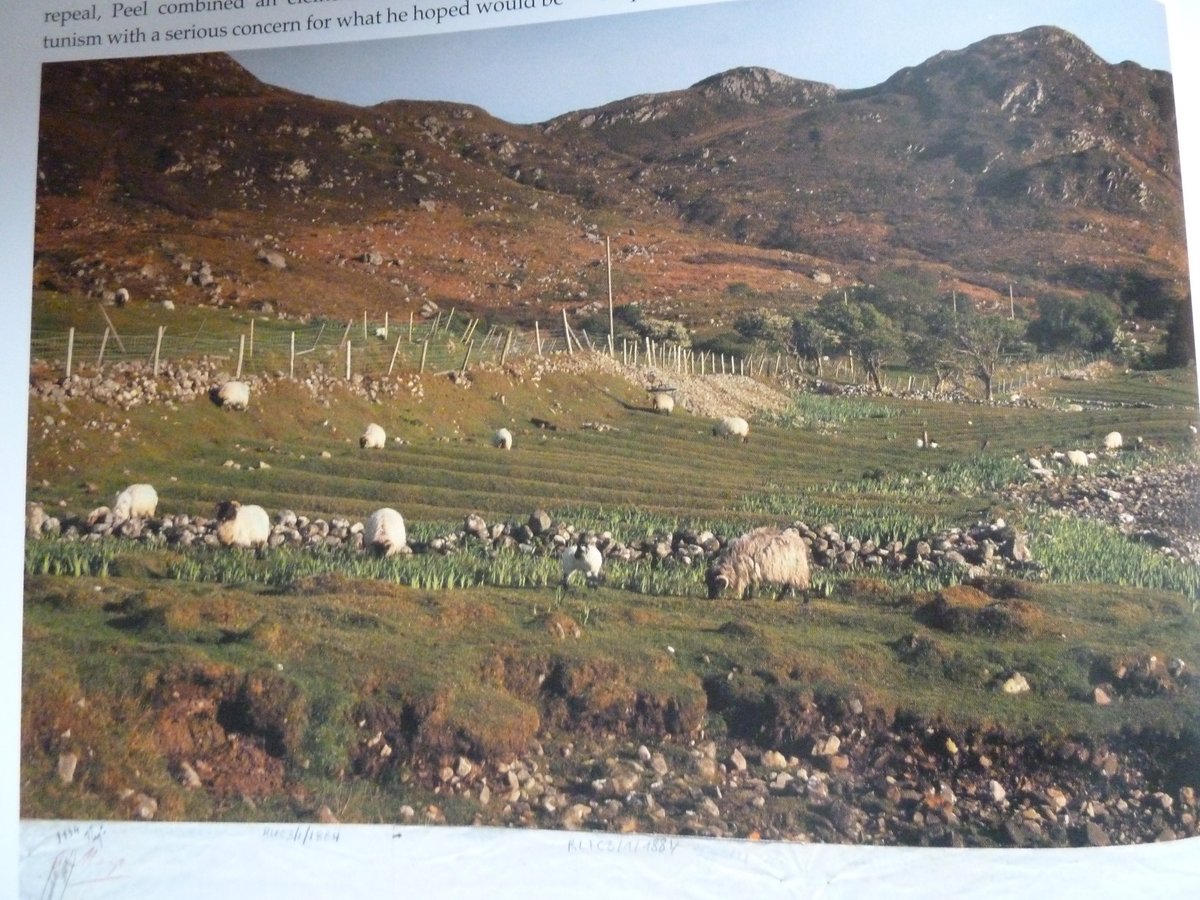 6 tonnes could be taken from 1 acre poor land!https://abs.twimg.com/emoji/v2/... draggable="false" alt="🥔" title="Kartoffel" aria-label="Emoji: Kartoffel">thrived in acidic, sodden, low-grade soil (couldn& #39;t sustain cereals)!https://abs.twimg.com/emoji/v2/... draggable="false" alt="🥔" title="Kartoffel" aria-label="Emoji: Kartoffel">highly efficient reclaiming agent!https://abs.twimg.com/emoji/v2/... draggable="false" alt="🥔" title="Kartoffel" aria-label="Emoji: Kartoffel">those who didn& #39;t have money or didn& #39;t want to emigrate could remain on land!©Ruan O& #39;Donnell" title="Lumper potato background:https://abs.twimg.com/emoji/v2/... draggable="false" alt="🥔" title="Kartoffel" aria-label="Emoji: Kartoffel">6 tonnes could be taken from 1 acre poor land!https://abs.twimg.com/emoji/v2/... draggable="false" alt="🥔" title="Kartoffel" aria-label="Emoji: Kartoffel">thrived in acidic, sodden, low-grade soil (couldn& #39;t sustain cereals)!https://abs.twimg.com/emoji/v2/... draggable="false" alt="🥔" title="Kartoffel" aria-label="Emoji: Kartoffel">highly efficient reclaiming agent!https://abs.twimg.com/emoji/v2/... draggable="false" alt="🥔" title="Kartoffel" aria-label="Emoji: Kartoffel">those who didn& #39;t have money or didn& #39;t want to emigrate could remain on land!©Ruan O& #39;Donnell" class="img-responsive" style="max-width:100%;"/>
6 tonnes could be taken from 1 acre poor land!https://abs.twimg.com/emoji/v2/... draggable="false" alt="🥔" title="Kartoffel" aria-label="Emoji: Kartoffel">thrived in acidic, sodden, low-grade soil (couldn& #39;t sustain cereals)!https://abs.twimg.com/emoji/v2/... draggable="false" alt="🥔" title="Kartoffel" aria-label="Emoji: Kartoffel">highly efficient reclaiming agent!https://abs.twimg.com/emoji/v2/... draggable="false" alt="🥔" title="Kartoffel" aria-label="Emoji: Kartoffel">those who didn& #39;t have money or didn& #39;t want to emigrate could remain on land!©Ruan O& #39;Donnell" title="Lumper potato background:https://abs.twimg.com/emoji/v2/... draggable="false" alt="🥔" title="Kartoffel" aria-label="Emoji: Kartoffel">6 tonnes could be taken from 1 acre poor land!https://abs.twimg.com/emoji/v2/... draggable="false" alt="🥔" title="Kartoffel" aria-label="Emoji: Kartoffel">thrived in acidic, sodden, low-grade soil (couldn& #39;t sustain cereals)!https://abs.twimg.com/emoji/v2/... draggable="false" alt="🥔" title="Kartoffel" aria-label="Emoji: Kartoffel">highly efficient reclaiming agent!https://abs.twimg.com/emoji/v2/... draggable="false" alt="🥔" title="Kartoffel" aria-label="Emoji: Kartoffel">those who didn& #39;t have money or didn& #39;t want to emigrate could remain on land!©Ruan O& #39;Donnell" class="img-responsive" style="max-width:100%;"/>
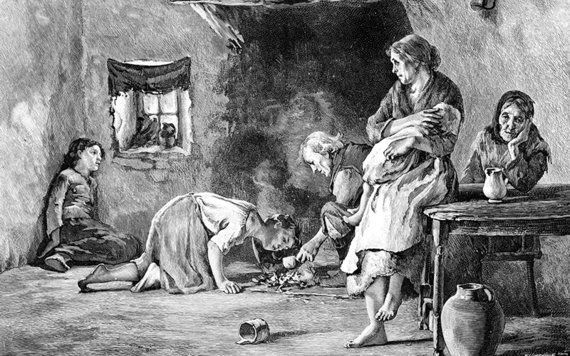
![Kartoffel "This complacency [not using a variety of potato types] was partly owed to lack of agricultural education and the estrangement of the Imperial parliament from Irish administration. It was also a testament to the strong faith in the sturdy crop [the Lumper]." Ruan O& #39;Donnell https://abs.twimg.com/emoji/v2/... draggable=](https://pbs.twimg.com/media/EdrytLXXoAAJoQR.jpg) " title=""This complacency [not using a variety of potato types] was partly owed to lack of agricultural education and the estrangement of the Imperial parliament from Irish administration. It was also a testament to the strong faith in the sturdy crop [the Lumper]." Ruan O& #39;Donnell https://abs.twimg.com/emoji/v2/... draggable="false" alt="🥔" title="Kartoffel" aria-label="Emoji: Kartoffel">" class="img-responsive" style="max-width:100%;"/>
" title=""This complacency [not using a variety of potato types] was partly owed to lack of agricultural education and the estrangement of the Imperial parliament from Irish administration. It was also a testament to the strong faith in the sturdy crop [the Lumper]." Ruan O& #39;Donnell https://abs.twimg.com/emoji/v2/... draggable="false" alt="🥔" title="Kartoffel" aria-label="Emoji: Kartoffel">" class="img-responsive" style="max-width:100%;"/>
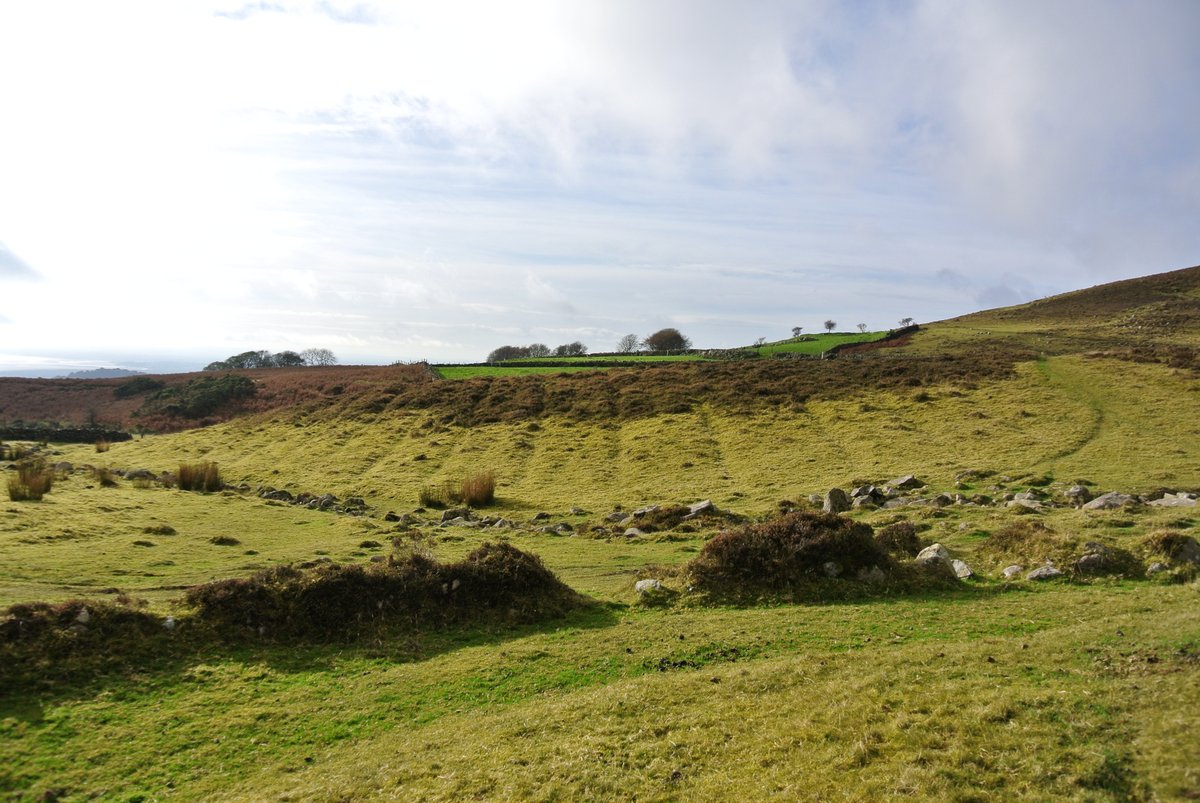 misnomered & #39;lazy beds& #39; in Cooley mts, Co Louth.https://abs.twimg.com/emoji/v2/... draggable="false" alt="🥔" title="Kartoffel" aria-label="Emoji: Kartoffel">" title=""By the mid-1800s approximately a third of the population depended on the potato for subsistence. Many more used the crop as an important part of their diet, as was the case in mid- and eastern Ulster and the towns." R O& #39;Donnell https://abs.twimg.com/emoji/v2/... draggable="false" alt="📷" title="Kamera" aria-label="Emoji: Kamera">misnomered & #39;lazy beds& #39; in Cooley mts, Co Louth.https://abs.twimg.com/emoji/v2/... draggable="false" alt="🥔" title="Kartoffel" aria-label="Emoji: Kartoffel">" class="img-responsive" style="max-width:100%;"/>
misnomered & #39;lazy beds& #39; in Cooley mts, Co Louth.https://abs.twimg.com/emoji/v2/... draggable="false" alt="🥔" title="Kartoffel" aria-label="Emoji: Kartoffel">" title=""By the mid-1800s approximately a third of the population depended on the potato for subsistence. Many more used the crop as an important part of their diet, as was the case in mid- and eastern Ulster and the towns." R O& #39;Donnell https://abs.twimg.com/emoji/v2/... draggable="false" alt="📷" title="Kamera" aria-label="Emoji: Kamera">misnomered & #39;lazy beds& #39; in Cooley mts, Co Louth.https://abs.twimg.com/emoji/v2/... draggable="false" alt="🥔" title="Kartoffel" aria-label="Emoji: Kartoffel">" class="img-responsive" style="max-width:100%;"/>
![Kamera "The plant [potato] was essential to the survival of the semi-formal co-operatives or & #39;clachans& #39; which continued to proliferate on the coasts of the north-west, especially in western Ulster and Connacht." R O& #39;Donnnell. https://abs.twimg.com/emoji/v2/... draggable=](https://pbs.twimg.com/media/EdxMT0_XsAUad2_.jpg) clachan/clochán at Glencolmcille Folk Village, Donegal https://abs.twimg.com/emoji/v2/... draggable="false" alt="🛖" title="Hut" aria-label="Emoji: Hut">https://abs.twimg.com/emoji/v2/... draggable="false" alt="🥔" title="Kartoffel" aria-label="Emoji: Kartoffel">" title=""The plant [potato] was essential to the survival of the semi-formal co-operatives or & #39;clachans& #39; which continued to proliferate on the coasts of the north-west, especially in western Ulster and Connacht." R O& #39;Donnnell. https://abs.twimg.com/emoji/v2/... draggable="false" alt="📷" title="Kamera" aria-label="Emoji: Kamera">clachan/clochán at Glencolmcille Folk Village, Donegal https://abs.twimg.com/emoji/v2/... draggable="false" alt="🛖" title="Hut" aria-label="Emoji: Hut">https://abs.twimg.com/emoji/v2/... draggable="false" alt="🥔" title="Kartoffel" aria-label="Emoji: Kartoffel">" class="img-responsive" style="max-width:100%;"/>
clachan/clochán at Glencolmcille Folk Village, Donegal https://abs.twimg.com/emoji/v2/... draggable="false" alt="🛖" title="Hut" aria-label="Emoji: Hut">https://abs.twimg.com/emoji/v2/... draggable="false" alt="🥔" title="Kartoffel" aria-label="Emoji: Kartoffel">" title=""The plant [potato] was essential to the survival of the semi-formal co-operatives or & #39;clachans& #39; which continued to proliferate on the coasts of the north-west, especially in western Ulster and Connacht." R O& #39;Donnnell. https://abs.twimg.com/emoji/v2/... draggable="false" alt="📷" title="Kamera" aria-label="Emoji: Kamera">clachan/clochán at Glencolmcille Folk Village, Donegal https://abs.twimg.com/emoji/v2/... draggable="false" alt="🛖" title="Hut" aria-label="Emoji: Hut">https://abs.twimg.com/emoji/v2/... draggable="false" alt="🥔" title="Kartoffel" aria-label="Emoji: Kartoffel">" class="img-responsive" style="max-width:100%;"/>
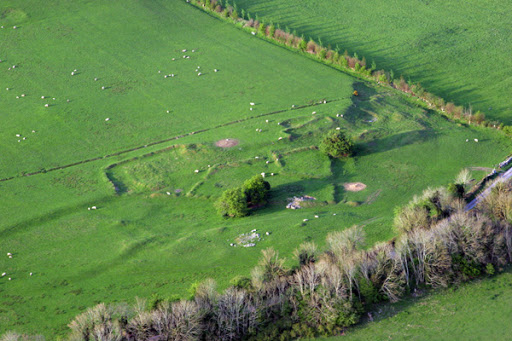 Clontuskert, Kellysgrove, Co Galway ©Clontuskert Photo Gallery https://abs.twimg.com/emoji/v2/... draggable="false" alt="👨🌾" title="Man farmer" aria-label="Emoji: Man farmer">https://abs.twimg.com/emoji/v2/... draggable="false" alt="🎣" title="Angelrute und Fisch" aria-label="Emoji: Angelrute und Fisch">" title="A clachan/clochán may date to medieval times or earlier. It is a cluster of small single-storey cottages of farmers &/or fishermen, invariably found on poorer land. They virtually disappeared because of Famine. https://abs.twimg.com/emoji/v2/... draggable="false" alt="📷" title="Kamera" aria-label="Emoji: Kamera">Clontuskert, Kellysgrove, Co Galway ©Clontuskert Photo Gallery https://abs.twimg.com/emoji/v2/... draggable="false" alt="👨🌾" title="Man farmer" aria-label="Emoji: Man farmer">https://abs.twimg.com/emoji/v2/... draggable="false" alt="🎣" title="Angelrute und Fisch" aria-label="Emoji: Angelrute und Fisch">" class="img-responsive" style="max-width:100%;"/>
Clontuskert, Kellysgrove, Co Galway ©Clontuskert Photo Gallery https://abs.twimg.com/emoji/v2/... draggable="false" alt="👨🌾" title="Man farmer" aria-label="Emoji: Man farmer">https://abs.twimg.com/emoji/v2/... draggable="false" alt="🎣" title="Angelrute und Fisch" aria-label="Emoji: Angelrute und Fisch">" title="A clachan/clochán may date to medieval times or earlier. It is a cluster of small single-storey cottages of farmers &/or fishermen, invariably found on poorer land. They virtually disappeared because of Famine. https://abs.twimg.com/emoji/v2/... draggable="false" alt="📷" title="Kamera" aria-label="Emoji: Kamera">Clontuskert, Kellysgrove, Co Galway ©Clontuskert Photo Gallery https://abs.twimg.com/emoji/v2/... draggable="false" alt="👨🌾" title="Man farmer" aria-label="Emoji: Man farmer">https://abs.twimg.com/emoji/v2/... draggable="false" alt="🎣" title="Angelrute und Fisch" aria-label="Emoji: Angelrute und Fisch">" class="img-responsive" style="max-width:100%;"/>
 Inver, Kilcommon, Erris, Co Mayo ©Comhar" title=""Communal farming facilitated & #39;rundale& #39; holdings where labourers divided a shared allotment into non-contiguous rectangular strips." R O& #39;Donnell. Common in Ireland, especially in western counties. Clachan was on the best land (infields).https://abs.twimg.com/emoji/v2/... draggable="false" alt="📷" title="Kamera" aria-label="Emoji: Kamera">Inver, Kilcommon, Erris, Co Mayo ©Comhar" class="img-responsive" style="max-width:100%;"/>
Inver, Kilcommon, Erris, Co Mayo ©Comhar" title=""Communal farming facilitated & #39;rundale& #39; holdings where labourers divided a shared allotment into non-contiguous rectangular strips." R O& #39;Donnell. Common in Ireland, especially in western counties. Clachan was on the best land (infields).https://abs.twimg.com/emoji/v2/... draggable="false" alt="📷" title="Kamera" aria-label="Emoji: Kamera">Inver, Kilcommon, Erris, Co Mayo ©Comhar" class="img-responsive" style="max-width:100%;"/>
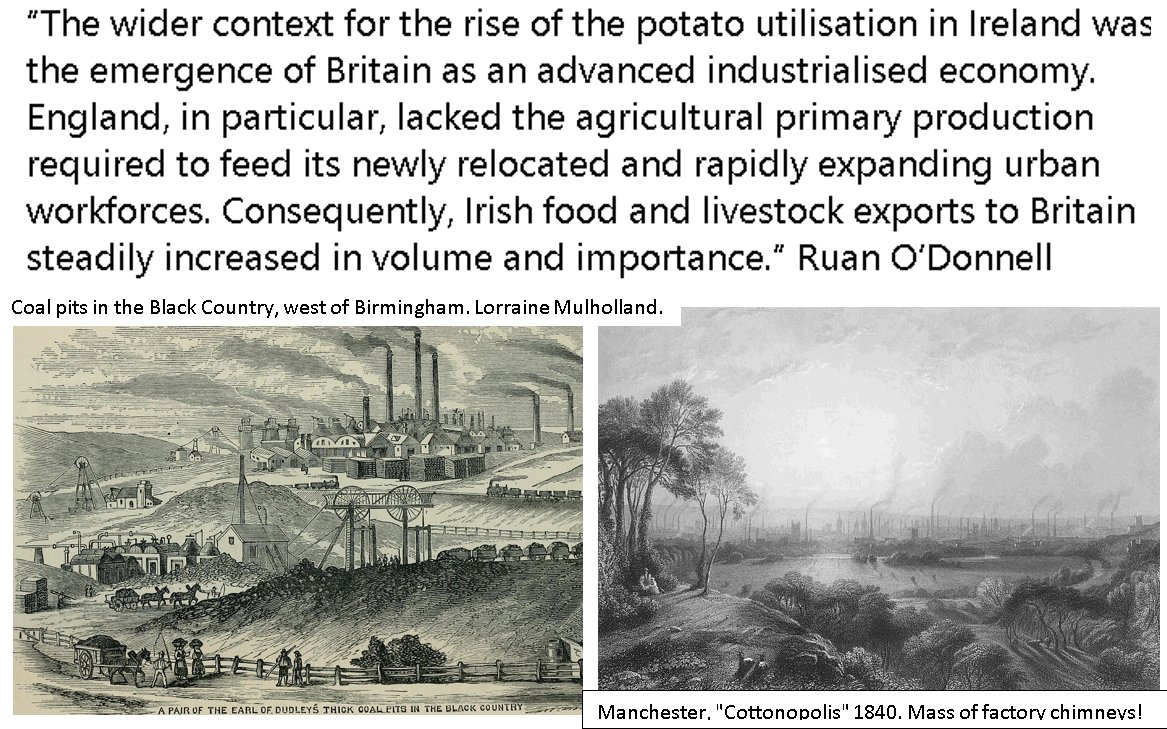 Since Britain going through Industrial Revolution, it lacked agricultural primary production required to feed its newly relocated/rapidly expanding urban workforces. So Irish food sent to them. Irish had to exist on the potato! Summary of Ruan O& #39;Donnell." title="Potato background contd.https://abs.twimg.com/emoji/v2/... draggable="false" alt="🥔" title="Kartoffel" aria-label="Emoji: Kartoffel">Since Britain going through Industrial Revolution, it lacked agricultural primary production required to feed its newly relocated/rapidly expanding urban workforces. So Irish food sent to them. Irish had to exist on the potato! Summary of Ruan O& #39;Donnell." class="img-responsive" style="max-width:100%;"/>
Since Britain going through Industrial Revolution, it lacked agricultural primary production required to feed its newly relocated/rapidly expanding urban workforces. So Irish food sent to them. Irish had to exist on the potato! Summary of Ruan O& #39;Donnell." title="Potato background contd.https://abs.twimg.com/emoji/v2/... draggable="false" alt="🥔" title="Kartoffel" aria-label="Emoji: Kartoffel">Since Britain going through Industrial Revolution, it lacked agricultural primary production required to feed its newly relocated/rapidly expanding urban workforces. So Irish food sent to them. Irish had to exist on the potato! Summary of Ruan O& #39;Donnell." class="img-responsive" style="max-width:100%;"/>
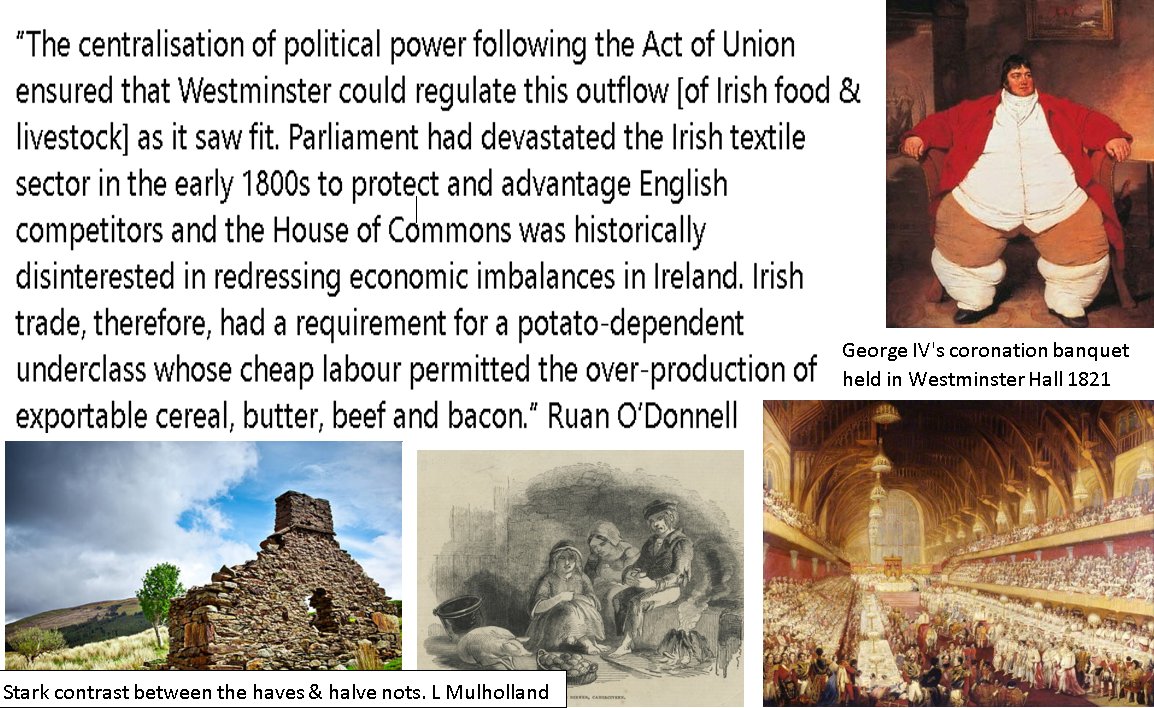 -Act of Union; Westminster took Irish food & livestock as it saw fit. -House of Commons historically disinterested in redressing economic imbalances in Ireland.-Irish trade needed potato-dependent underclass of cheap labour.Ruan O’Donnell summary." title="Potato background contd. https://abs.twimg.com/emoji/v2/... draggable="false" alt="🥔" title="Kartoffel" aria-label="Emoji: Kartoffel">-Act of Union; Westminster took Irish food & livestock as it saw fit. -House of Commons historically disinterested in redressing economic imbalances in Ireland.-Irish trade needed potato-dependent underclass of cheap labour.Ruan O’Donnell summary." class="img-responsive" style="max-width:100%;"/>
-Act of Union; Westminster took Irish food & livestock as it saw fit. -House of Commons historically disinterested in redressing economic imbalances in Ireland.-Irish trade needed potato-dependent underclass of cheap labour.Ruan O’Donnell summary." title="Potato background contd. https://abs.twimg.com/emoji/v2/... draggable="false" alt="🥔" title="Kartoffel" aria-label="Emoji: Kartoffel">-Act of Union; Westminster took Irish food & livestock as it saw fit. -House of Commons historically disinterested in redressing economic imbalances in Ireland.-Irish trade needed potato-dependent underclass of cheap labour.Ruan O’Donnell summary." class="img-responsive" style="max-width:100%;"/>
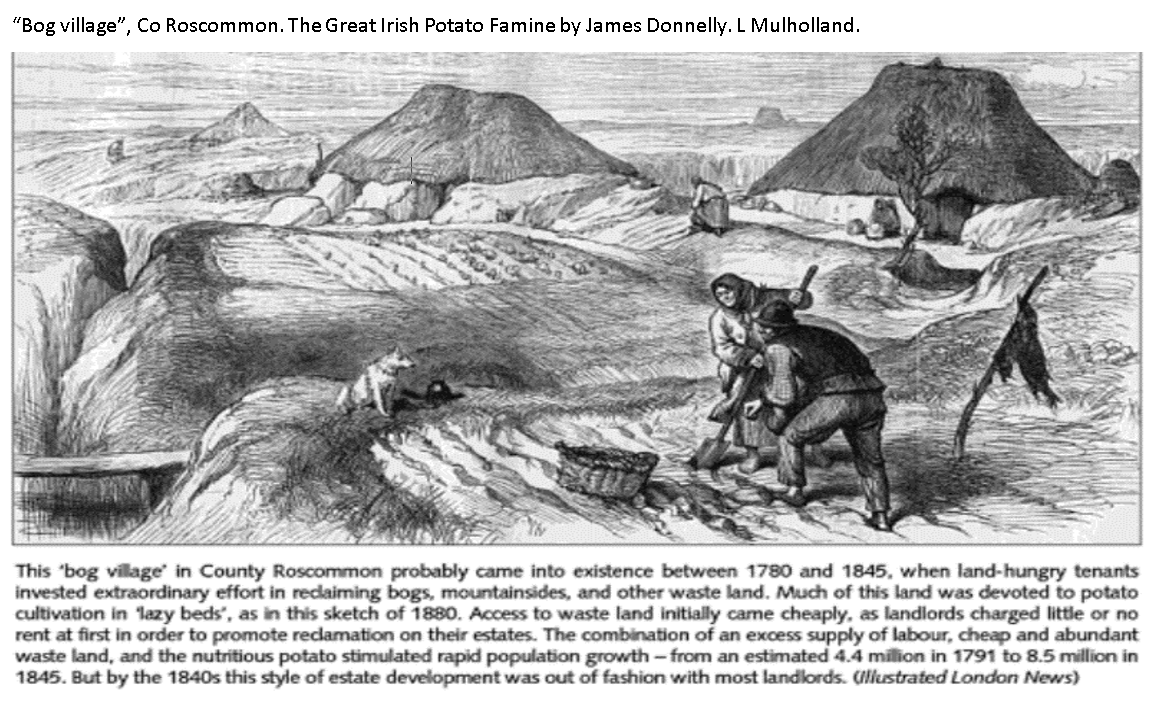 -Oatmeal, increasingly required to fulfil rent rather than food.-Cows/milk beyond reach of poor farmers.-For poor (3 million?), >90% nutritional needs met by potato!-1835 Poor Law Commissioners Report: 2.3 million living in dire poverty in Ireland." title="Potato background contd. https://abs.twimg.com/emoji/v2/... draggable="false" alt="🥔" title="Kartoffel" aria-label="Emoji: Kartoffel">-Oatmeal, increasingly required to fulfil rent rather than food.-Cows/milk beyond reach of poor farmers.-For poor (3 million?), >90% nutritional needs met by potato!-1835 Poor Law Commissioners Report: 2.3 million living in dire poverty in Ireland." class="img-responsive" style="max-width:100%;"/>
-Oatmeal, increasingly required to fulfil rent rather than food.-Cows/milk beyond reach of poor farmers.-For poor (3 million?), >90% nutritional needs met by potato!-1835 Poor Law Commissioners Report: 2.3 million living in dire poverty in Ireland." title="Potato background contd. https://abs.twimg.com/emoji/v2/... draggable="false" alt="🥔" title="Kartoffel" aria-label="Emoji: Kartoffel">-Oatmeal, increasingly required to fulfil rent rather than food.-Cows/milk beyond reach of poor farmers.-For poor (3 million?), >90% nutritional needs met by potato!-1835 Poor Law Commissioners Report: 2.3 million living in dire poverty in Ireland." class="img-responsive" style="max-width:100%;"/>
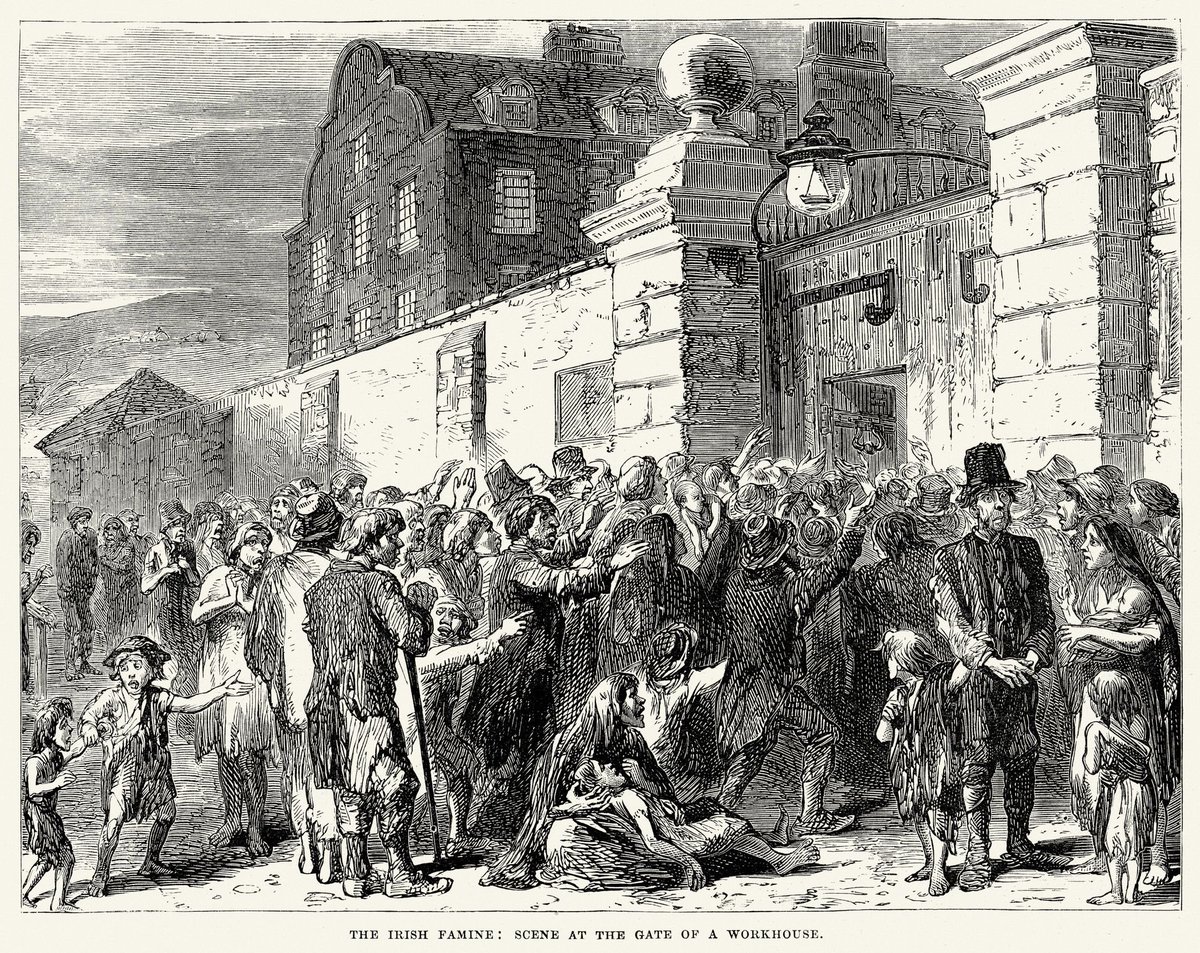

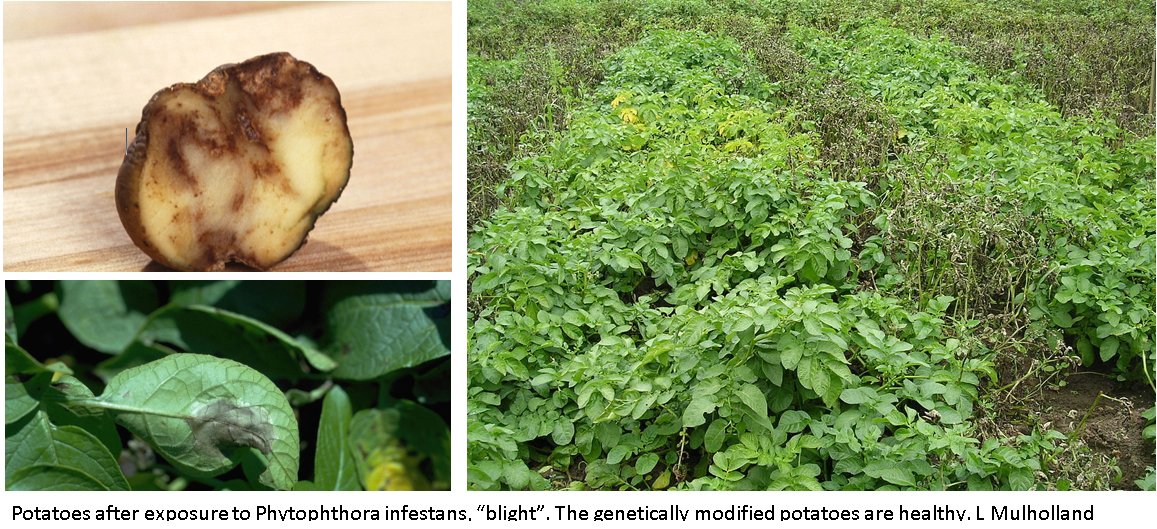
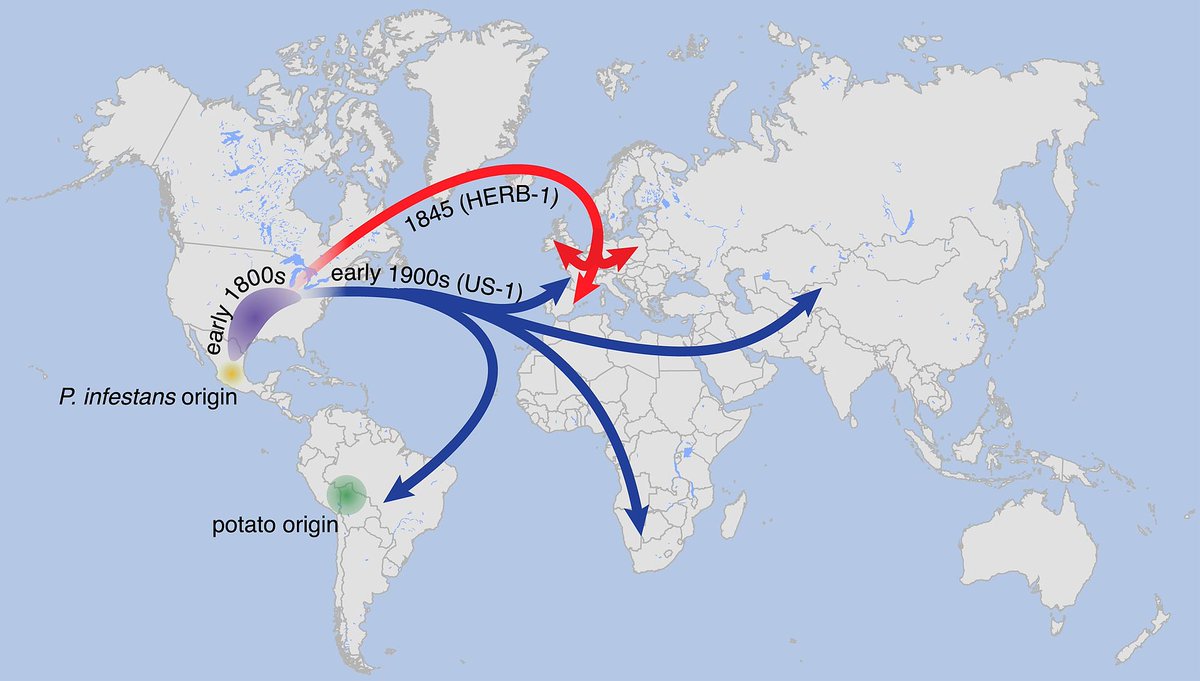
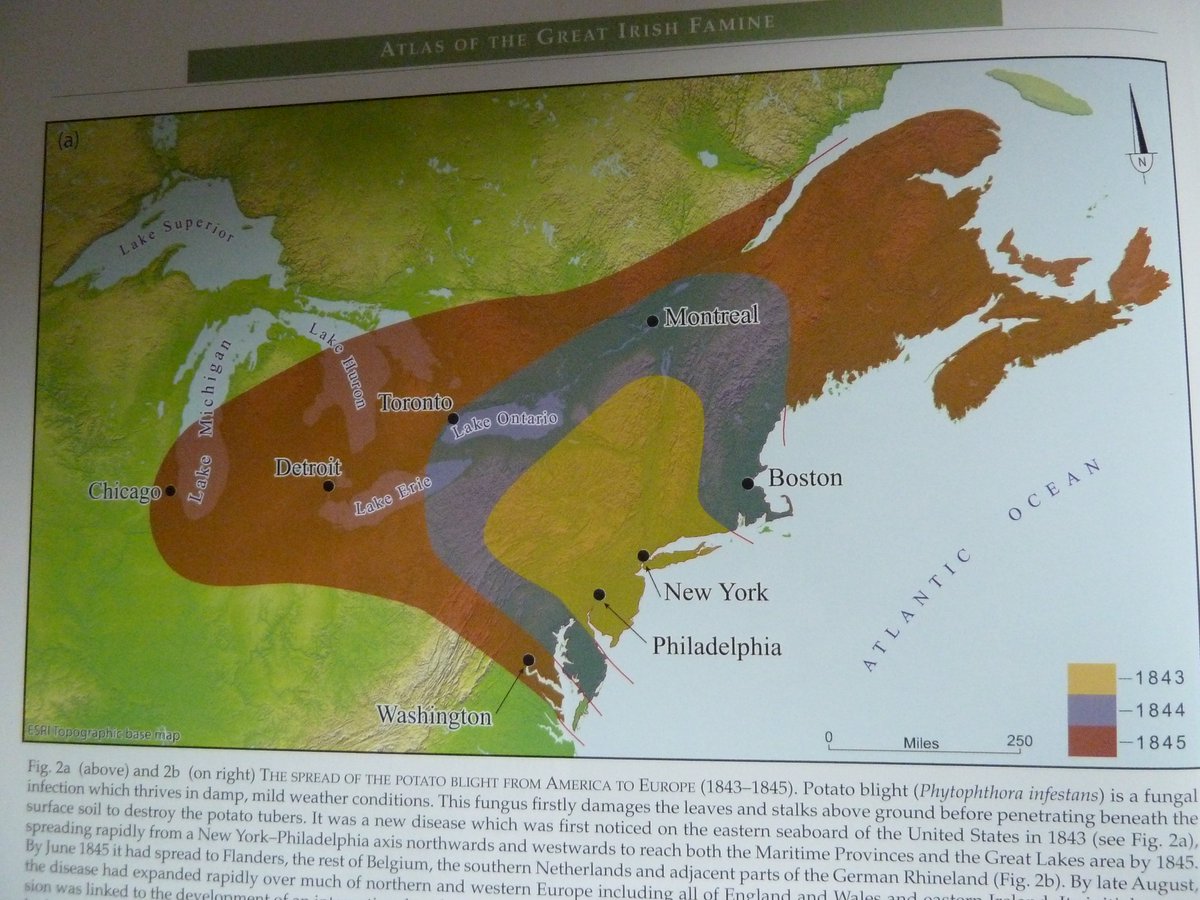
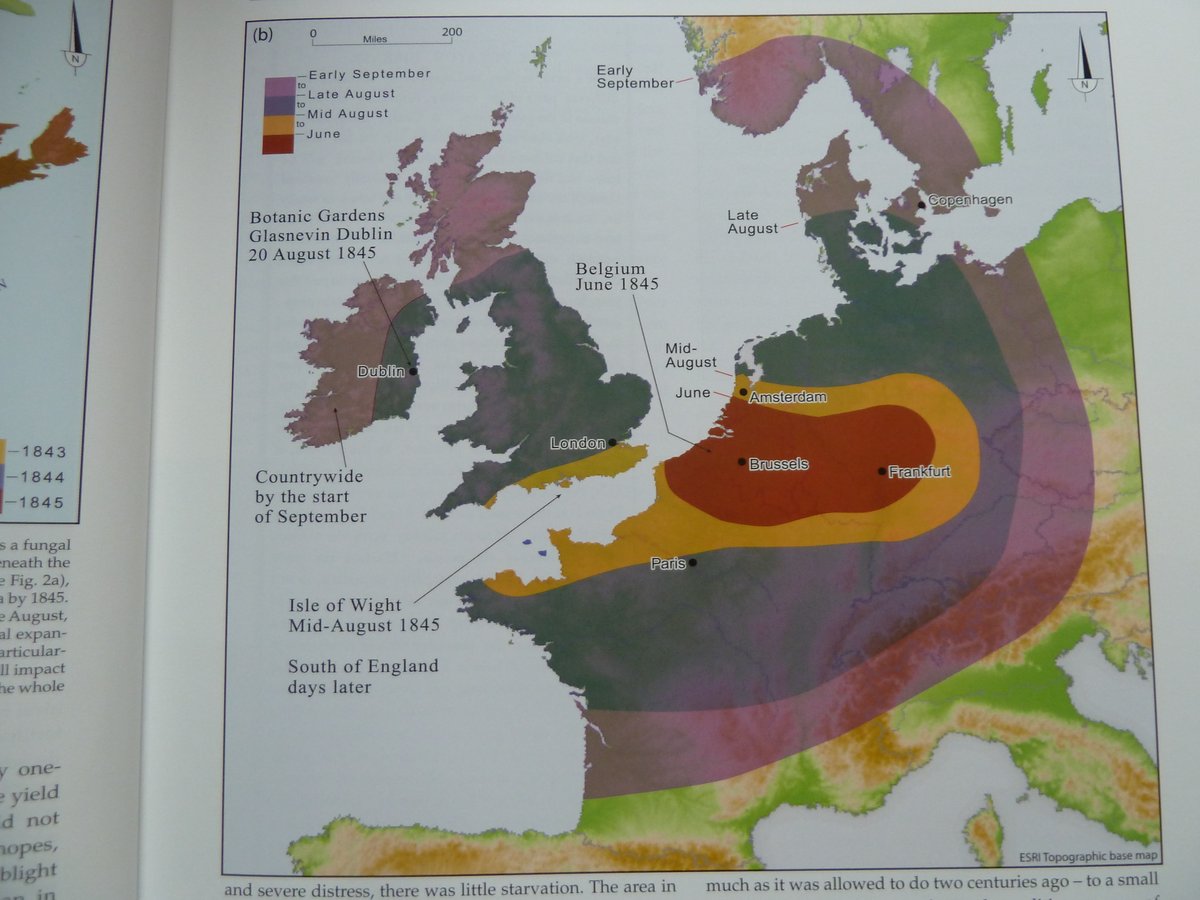
 https://dublin.epicchq.com/great-fam..." title="I really recommend this fantastic & #39;EPIC The Irish Emigration Museum& #39; downloadable history pack on the Great Famine/Hunger, for children aged 8+! Has lots of facts adults might not know! Just send them your email! https://abs.twimg.com/emoji/v2/... draggable="false" alt="🥔" title="Kartoffel" aria-label="Emoji: Kartoffel"> https://dublin.epicchq.com/great-fam..." class="img-responsive" style="max-width:100%;"/>
https://dublin.epicchq.com/great-fam..." title="I really recommend this fantastic & #39;EPIC The Irish Emigration Museum& #39; downloadable history pack on the Great Famine/Hunger, for children aged 8+! Has lots of facts adults might not know! Just send them your email! https://abs.twimg.com/emoji/v2/... draggable="false" alt="🥔" title="Kartoffel" aria-label="Emoji: Kartoffel"> https://dublin.epicchq.com/great-fam..." class="img-responsive" style="max-width:100%;"/>
